After a long winter, most of us are impatient for spring. It means warmer weather, the return of migratory birds, thawing soil and, of course, a return to gardening.
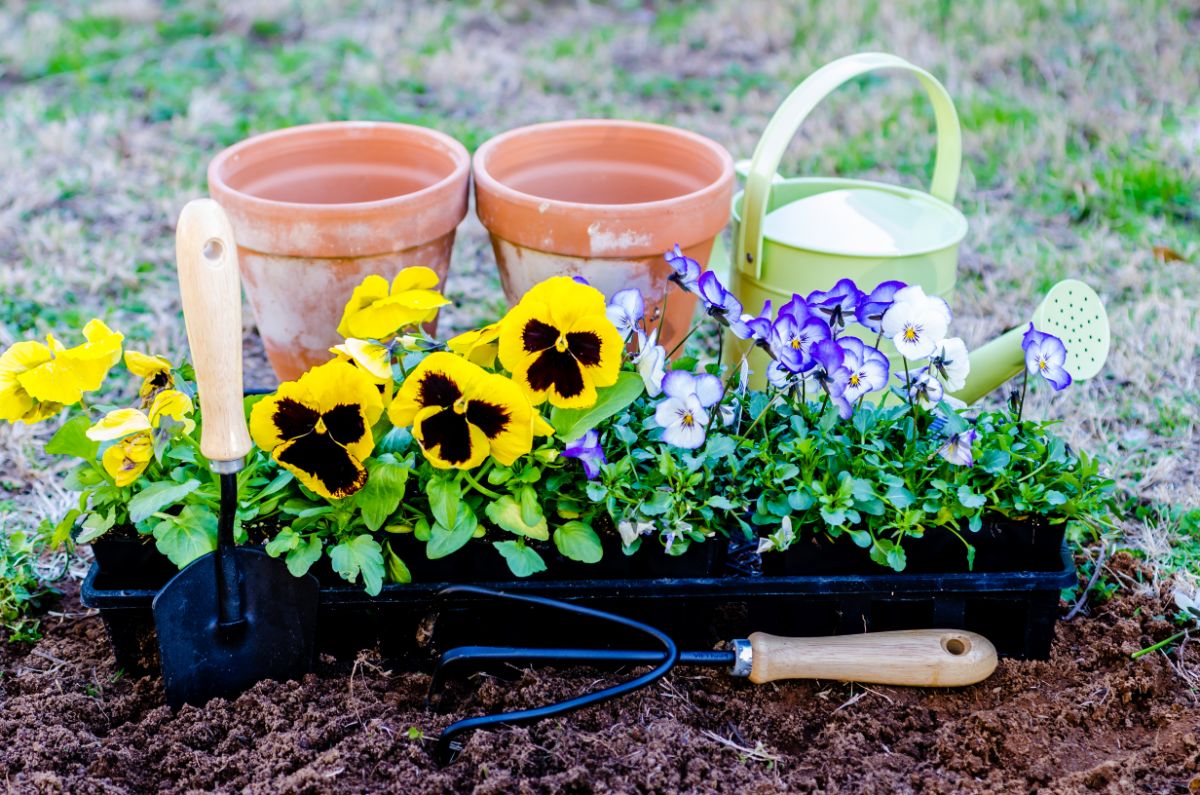
Having spent so much time indoors, most gardeners are more than ready to get their hands back into the soil as soon as it thaws in spring. And while many spring-blooming flowers, like tulips and crocuses, are best planted in autumn, there are still lots of plants that are ideal for spring planting in March, April and May.
Some of the best flowers to plant in spring are early bloomers that are frost hardy or semi-frost hardy and are able to withstand the cooler temperatures of early spring. But that’s not all. If you love big bold summertime blooms, like sunflowers, the best time to plant them is in spring too!
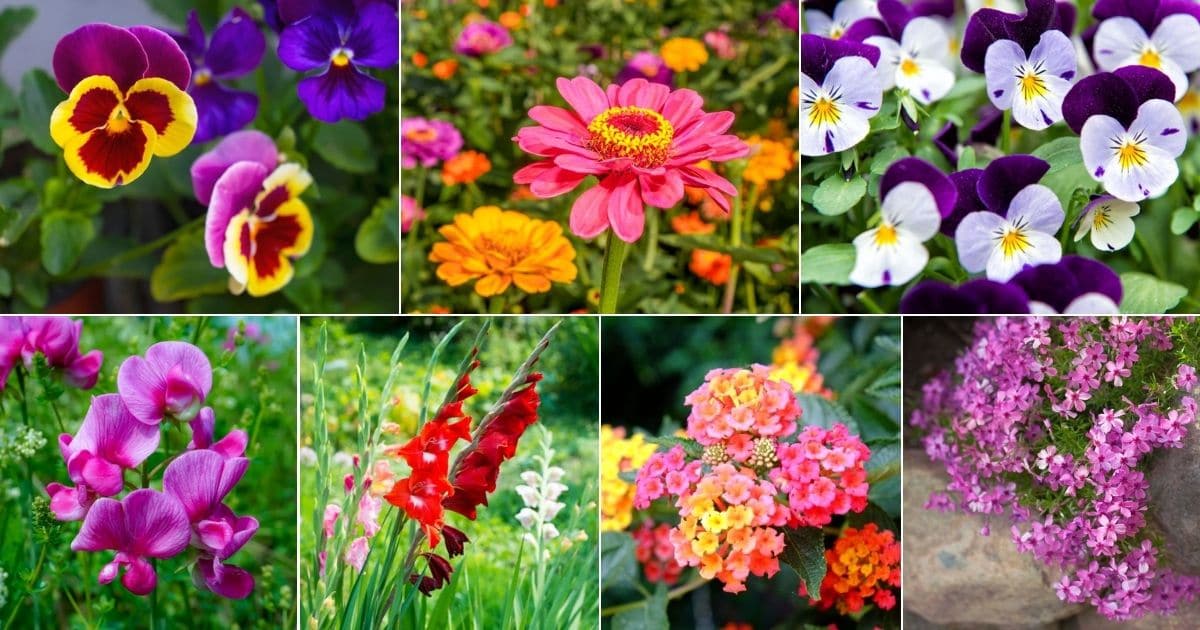
So, dust off your gardening gloves and get ready to plant. Spring is a great time to sow new annuals, perennials, tubers and seeds. Below we’ve selected some of the best flowering plants to plant in your springtime garden with a bit of information about why we love each option so much too.
Jump to:
- When can I start planting flowers in spring?
- Best flowers for spring planting
- 1. Pansies
- 2. Violas
- 3. Dianthus
- 4. Snapdragons
- 5. Forget-Me-Nots
- 6. Alyssum
- 7. Sweet Peas
- 8. Borage
- 9. Phlox
- 10. Lantana
- 11. Dahlias
- 12. Gladiolus
- 13. Bleeding Hearts
- 14. Sunflowers
- 15. Morning Glories
- 16. Black Eyed Susan
- 17. Comfrey
- 18. Cosmos
- 19. Zinnias
- 20. Lunaria
- 21. Bells of Ireland
- Where should I buy my plants from?
- How to protect spring flowers from late frosts?
- Conclusion
When can I start planting flowers in spring?
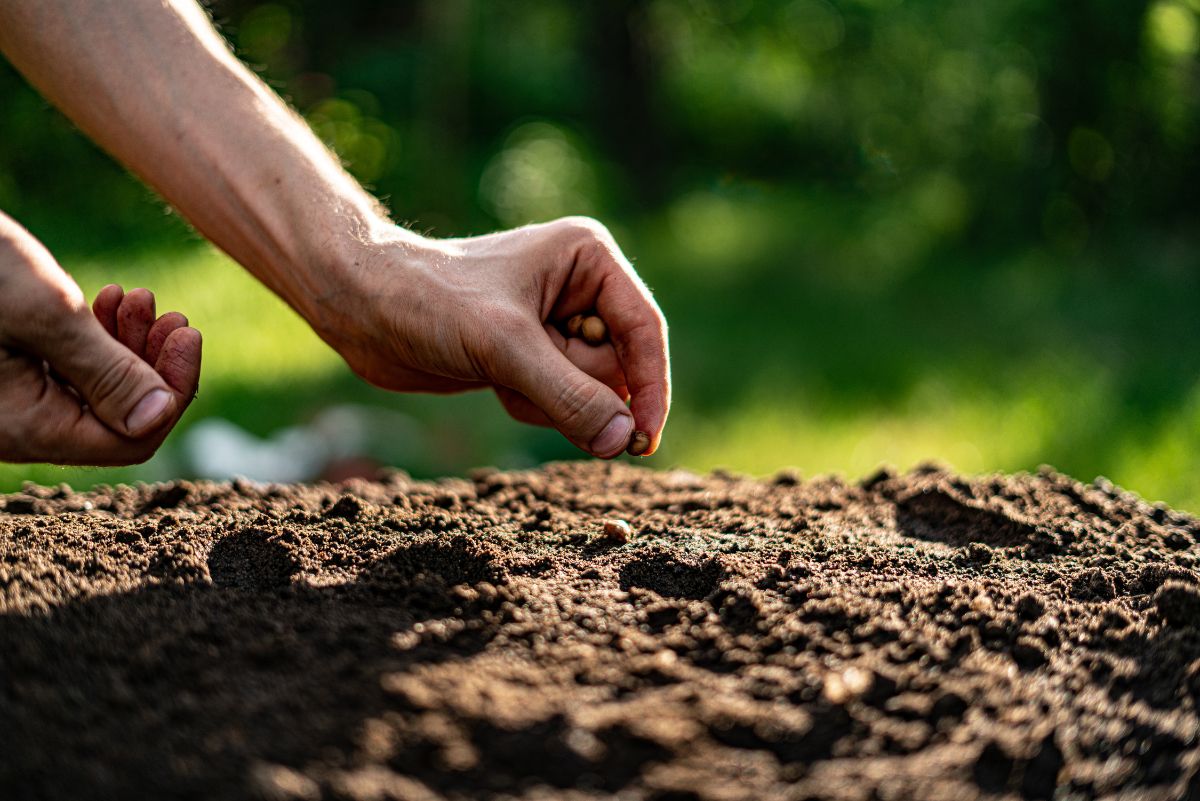
For many areas, you can begin spring planting as soon as your soil thaws enough to be workable. This usually occurs in late March to early April. That said, not all flowers can be planted outdoors that early, so you’ll need to read up on the planting instructions for the particular plants you’re interested in sowing.
If you’re starting flowers from seeds, be sure to carefully read their seed packets, looking for information about sowing requirements, such as when to sow, germination time and whether or not certain seeds should be started indoors or directly planted in your garden.
If, on the other hand, you’re starting flowers from tubers, bulbs or nursery starts, check nursery tags for valuable information, like planting time and whether flowers are frost hardy or not.
Often frost hardy or semi-frost hardy flowers can be planted outdoors before your last frost date. On the other hand, frost sensitive plants, like sunflowers, should only be sown outside in late spring, after all danger of frost has passed.
Before planting any seedlings or nursery starts outdoors, ensure that they have been properly hardened off – even “frost hardy” specimens. Hardening off helps plants to adapt to fluctuating temperatures and light that comes with being transplanted outdoors from an indoor greenhouse or grow room. While most seedlings purchased from nurseries have often already been hardened off, seedlings you start indoors should be hardened off for at least a week before transplanting outside.
Much of the time, plant labels will advise that plants be planted outdoors before or after your last frost date, so keep this in mind. Your local frost dates are super important when it comes to gardening and it’s essential that any gardener discovers the dates for their particular region. Happily, frost dates are very easy to figure out.
How do I find my first and last frost dates?

The simplest way to determine what your frost dates are is to check online on the Old Farmer’s Almanac website. Simply input your zip code into the search bar and you’ll be provided with your first and last frost dates, as well as the length of the growing season in your area.
You can also pick up a print copy of the Old Farmer’s Almanac, which will provide you with information on your growing region, frost dates and other valuable gardening tips.
Best flowers for spring planting

Because spring is the best time for planting most flowers, there are too many flowers to mention that would be great for planting outdoors in early to late spring. Below, we’ve selected just a few of our favorites.
These are popular plants that offer lots of colorful blooms and are all relatively low maintenance plants. This list includes some frost-hardy species for early flowers, as well as some summertime bloomers that are best planted in spring for an abundance of flowers later on.
1. Pansies
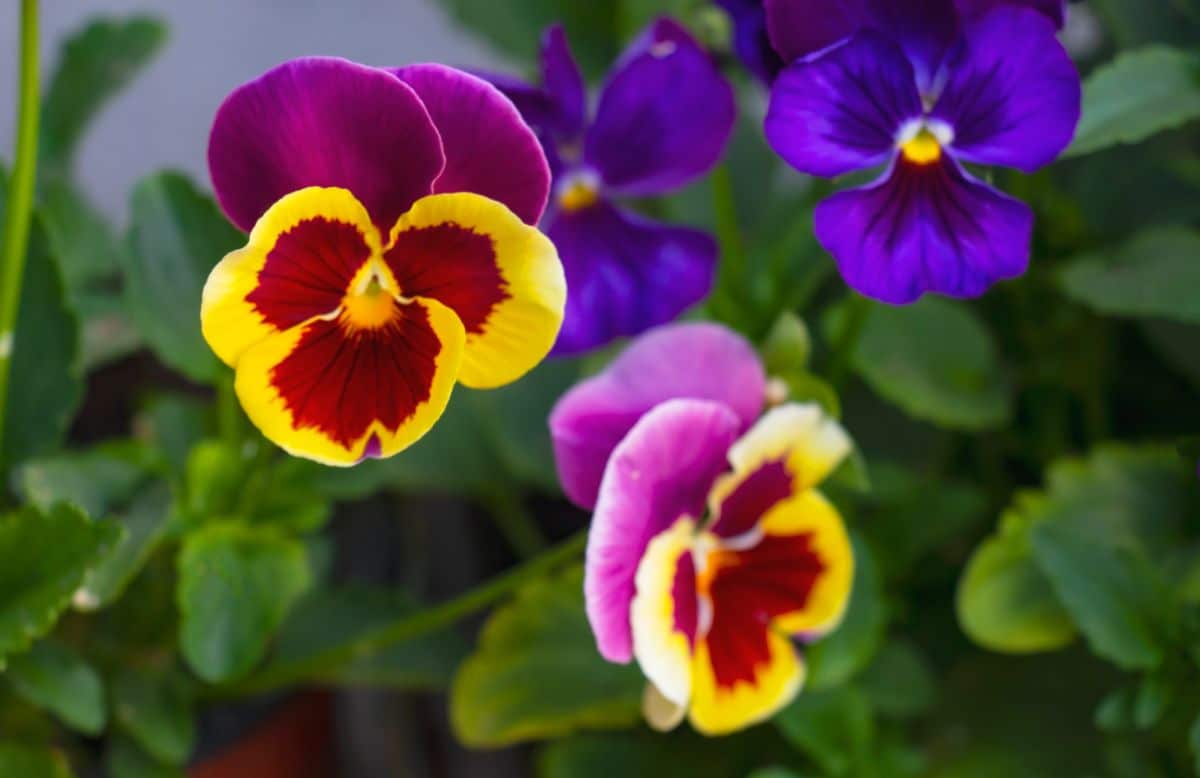
| Plant Name: | Pansies |
| When to Sow Seeds: | Transplant (recommended), Start seeds indoors 8 to 10 weeks before last frost date |
| Lighting: | Full sun to part shade |
| Water: | Moderate |
| Minimum Grow Zone: | Zone 6 |
Pansies come in a wide range of colors and are extremely popular flowers to plant throughout the growing season. But while their sweet little blooms may look delicate, they are actually surprisingly frost hardy. As a result, pansies are some of the best flowers for spring planting.
In zone 6 and above, pansies can grow as perennials; however, for cooler regions, pansies are best started indoors about 8 to 10 weeks before your last frost date. They’ll reach a size suitable for transplanting in about 6 weeks and will be mature enough to flower within 10 to 12 weeks after sowing. In general, pansies can be planted outdoors as soon as the soil is workable.
Whether started from seed or purchased as nursery starts, pansies are frost tolerant and can survive light frosts with little damage. However, if flowers become damaged by frost, simply pinch them off. The plant itself should quickly recover and produce more blooms in no time.
2. Violas
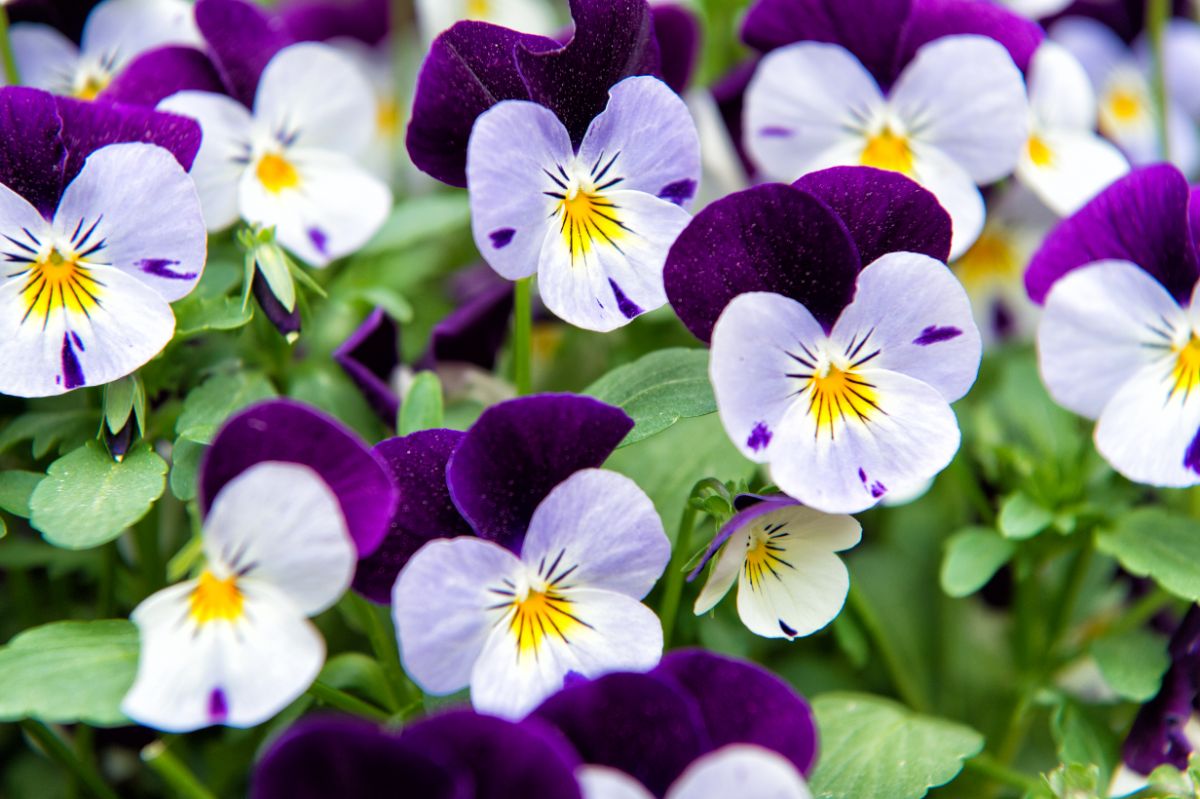
| Plant Name: | Violas |
| When to Sow Seeds: | Transplant (recommended), Start seeds indoors 8 to 12 weeks before last frost date |
| Lighting: | Full sun to part shade |
| Water: | Moderate |
| Minimum Grow Zone: | Zone 3 |
A close relative of pansies, violas are their even hardier cousins and are perfect plants for spring gardens.
As they both have colorful, petite blooms, violas and pansies are often confused, but there are some key differences. Violas have smaller flowers, but they produce more blooms. Violas also have a lower growth habit and are perfect for creating thick layers of ground coverage at the front of garden beds. Additionally, violas are a bit more cold-tolerant, produce earlier flowers and can grow as perennials in areas as cool as zone 3.
Like pansies, violas do well when grown from nursery starts or planted as seeds. If you want to grow your own violas from seed, sow your seeds indoors 10 to 12 weeks before your last frost date. Plants can be transplanted outside as soon as soil is workable and will produce flowers within 12 to 14 weeks after sowing.
Violas can survive temperatures as low as 32° F. If spring temperatures drop lower than this, simply cover your violas with a blanket or other covering and they should do just fine.
3. Dianthus
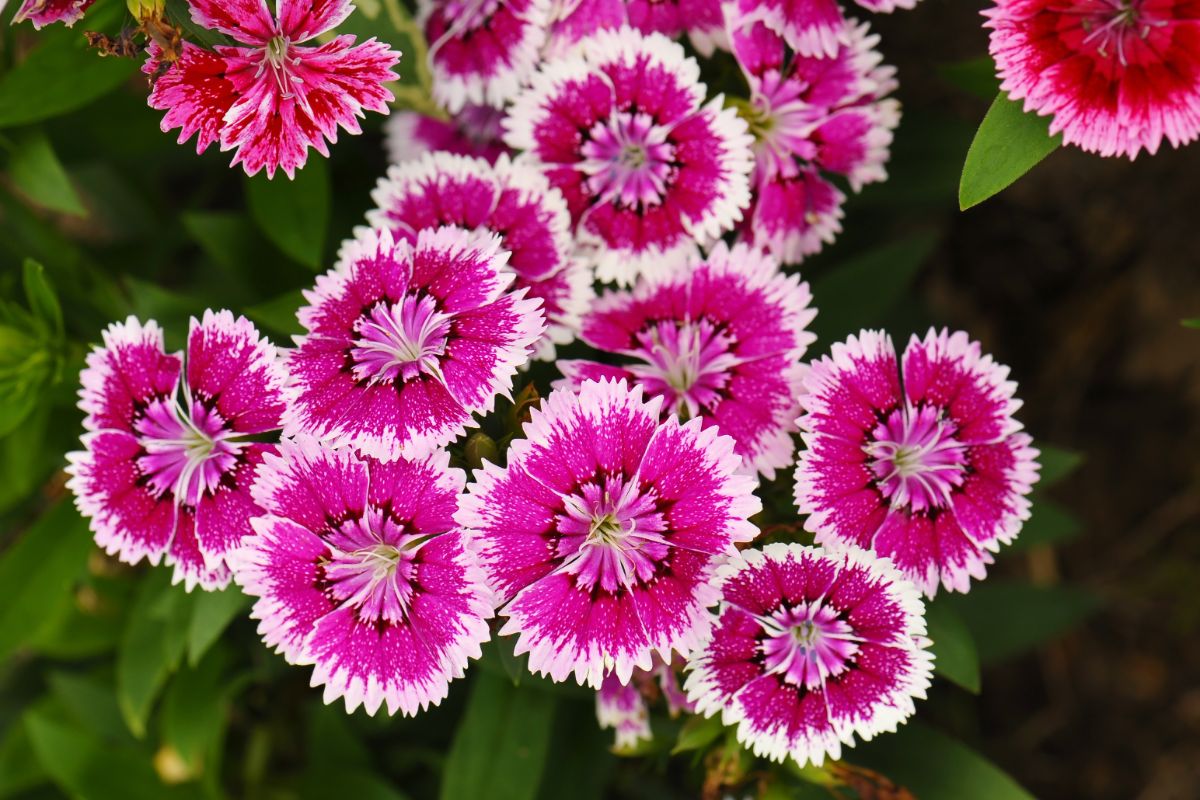
| Plant Name: | Dianthus |
| When to Sow Seeds: | Transplant (recommended), Start seeds indoors 6 to 8 weeks before last frost date |
| Lighting: | Full sun to part shade |
| Water: | Moderate |
| Minimum Grow Zone: | Zone 4 |
Not quite as frost hardy as violas, dianthus can still handle cool spring temperatures quite well. In fact, dianthus is usually able to tolerate light frosts; however, a hard freeze will kill them so don’t plant them out too early.
In general, dianthus can either be started indoors or outdoors from seed or grown from nursery starts. For direct sowing, plant seeds outdoors in early spring when soil is workable. Alternatively, seeds can be started indoors about 8 weeks before your last frost date. When grown from seed, dianthus will begin to flower in about 3 to 4 months.
While dianthus can be planted in summer and fall too, planting nursery starts or transplants outdoors when temperatures are still cool in spring encourages plants to develop deeper roots.
Known for their frilly, fragrant flowers that come in pink, white, red, yellow and bi-color, dianthus are favorites among early emerging, spring butterflies too!
4. Snapdragons
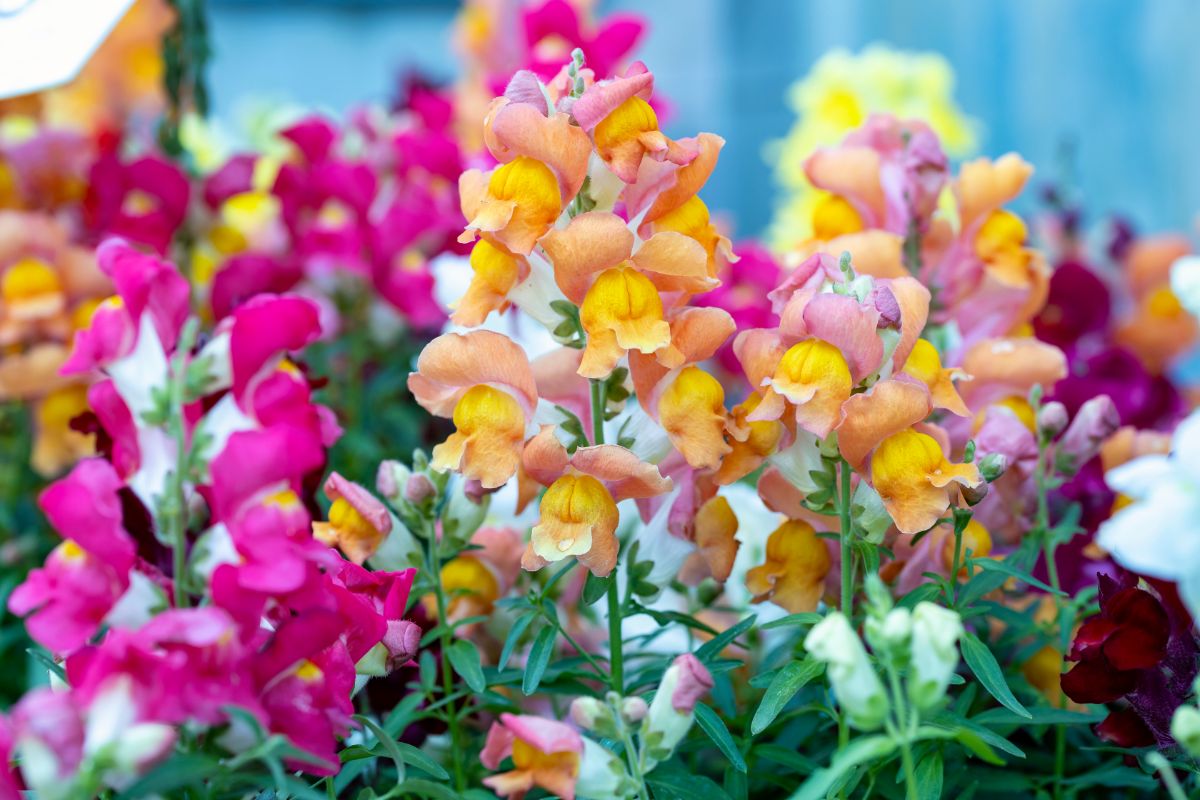
| Plant Name: | Snapdragons |
| When to Sow Seeds: | Transplant (recommended), Start seeds indoors 8 to 10 weeks before last frost date |
| Lighting: | Full sun to part shade |
| Water: | Moderate |
| Minimum Grow Zone: | Zone 7 |
Another great option for spring planting, snapdragons are colorful little flowers that can handle quite a bit of cold! In fact, once established, snapdragons can tolerate temperatures below 32° F, especially if the base of the plants has been insulated with mulch.
Usually grown as annuals below zone 7, snapdragons can potentially survive as perennials down to zone 5 if protected from deep freeze with coverings of mulch or other protective barriers.
Snapdragons are available at most plant nurseries as starts, with vibrant blooms in pastel pinks, oranges and yellows. They can also be sown from seeds indoors, 12 weeks before your last frost date.
And, if you needed more reasons to like snapdragons, they are some of the best flowers to plant to attract bumble bees!
5. Forget-Me-Nots
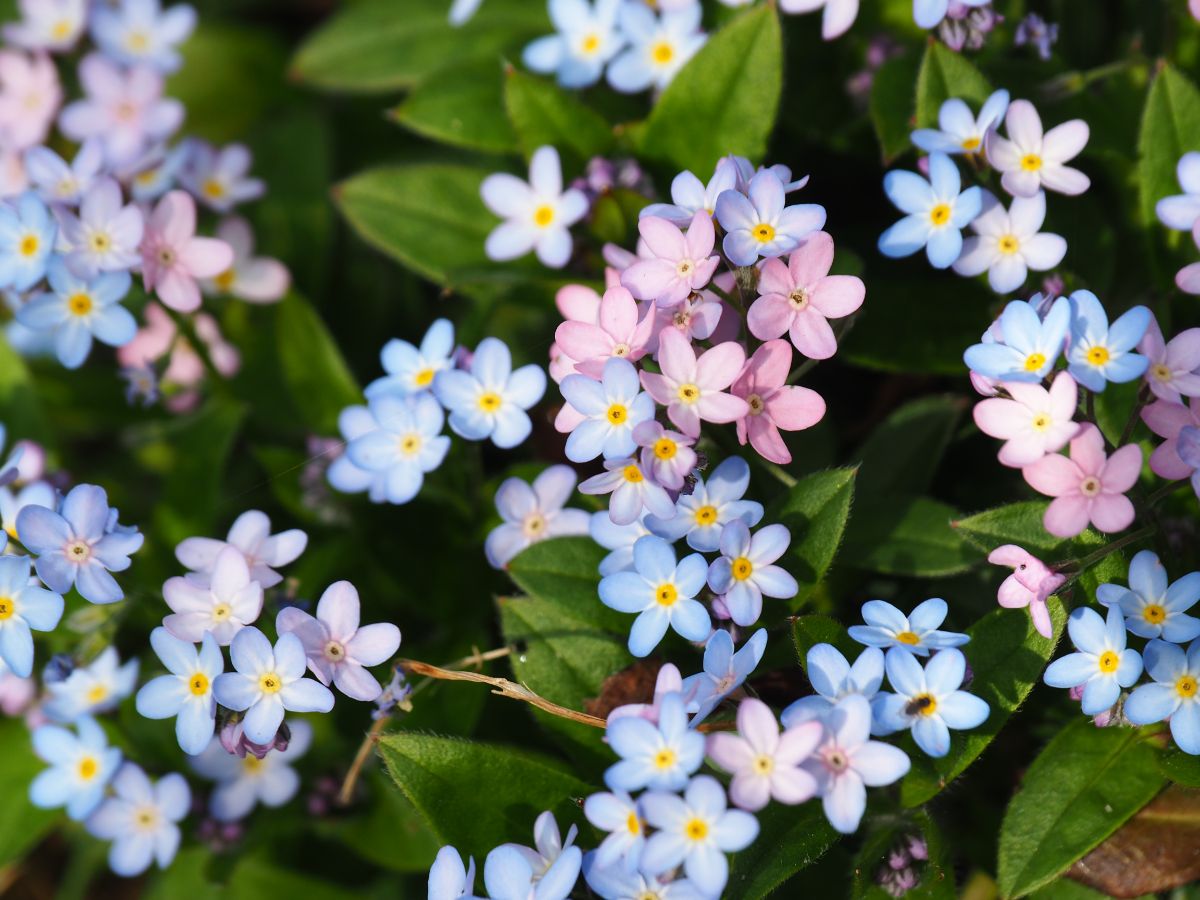
| Plant Name: | Forget-Me-Nots |
| When to Sow Seeds: | Transplant, Start seeds indoors 3 to 4 weeks before last frost date Direct sow, As soon as soil can be worked |
| Lighting: | Full sun to part shade |
| Water: | Moderate |
| Minimum Grow Zone: | Zone 3 |
There are several different species of forget-me-nots, and all of them are known for their delicate little flowers and easy-going nature.
Drought-tolerant once established, forget-me-nots can grow in partial shade to full sun, although they prefer a bit of afternoon shade if you live in a particularly warm region.
Hardy to zone 3, forget-me-nots are rather slow to bloom and can take up to a year to mature fully. However, if you get your forget-me-nots planted early in spring, there’s a good chance you may get some late fall blooms.
Forget-me-nots bloom from May to October with lots of clusters of colorful flowers. One particular species of forget-me-nots has flowers that change colors, starting out as yellow then transitioning to pink and finally fading into cheery blue blooms.
6. Alyssum
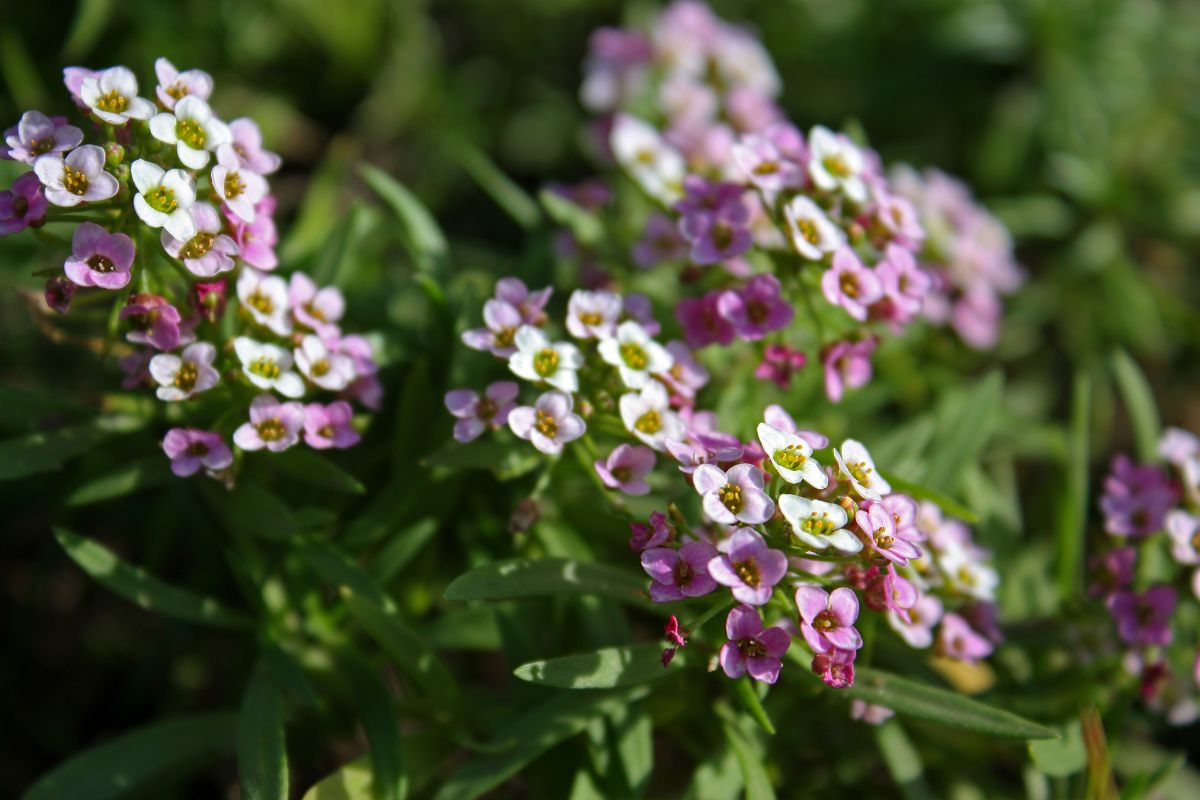
| Plant Name: | Alyssum |
| When to Sow Seeds: | Transplant (recommended), Start seeds indoors 4 to 5 weeks before last frost date |
| Lighting: | Full sun to part shade |
| Water: | Moderate |
| Minimum Grow Zone: | Zone 5 |
Also known as sweet alyssum, alyssum produces a strong fragrance that can draw in pollinators, like bees, from far away. When used as a companion plant, this helpful little flower can also help lure beneficial insects to your garden as part of your natural, organic pest control strategy.
Grown from either nursery starts or seeds, alyssum seeds are started indoors 6 to 8 weeks before your last frost date. It’s often best to wait until after your last frost date to transplant your alyssum outdoors, although this hardy plant can tolerate a bit of light frost.
With flowers in white, pink, peach or purple, alyssum is used in either in-ground or container gardens, where its trailing growth habit tends to spread and fill in empty space.
Sweet alyssum produces lots of long-lasting blooms and will flower all season long, from spring to fall. If you plant your sweet alyssum as seeds in spring, just keep in mind that it will take about 9 to 10 weeks for them to mature enough to flower.
7. Sweet Peas
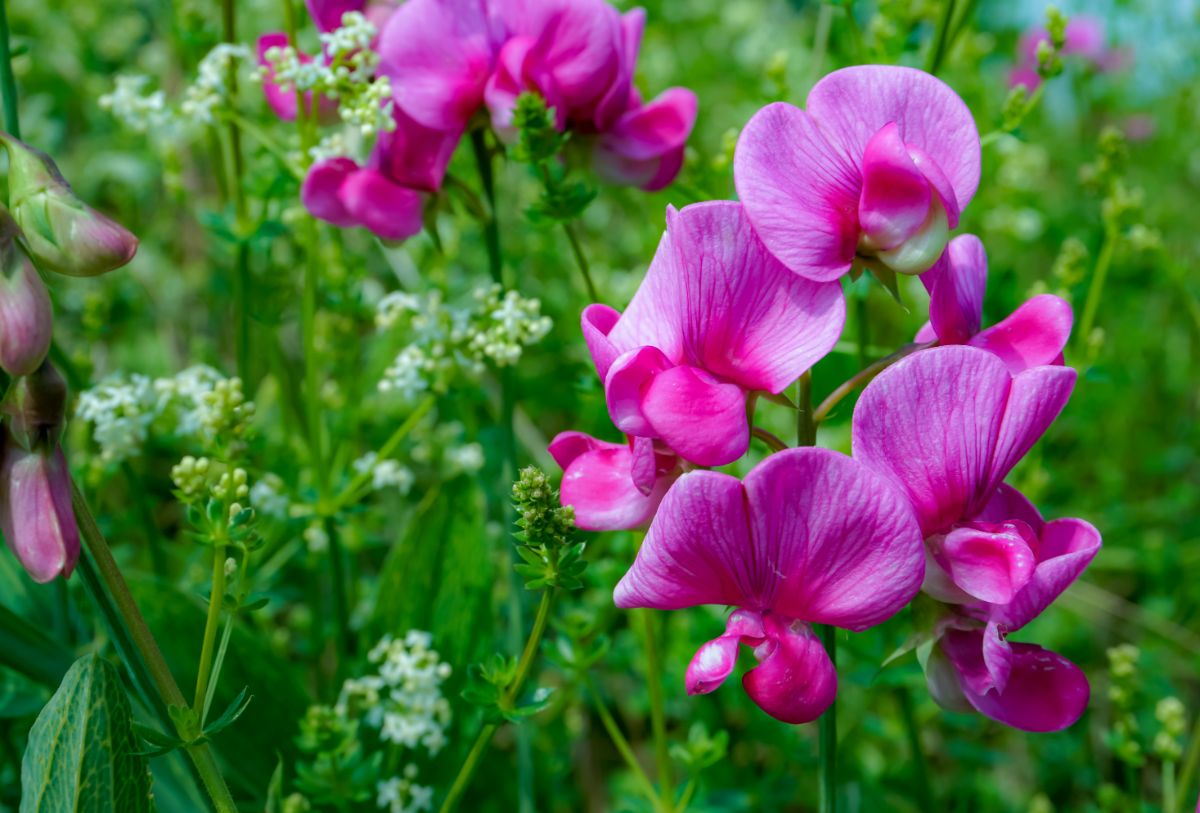
| Plant Name: | Sweet Peas |
| When to Sow Seeds: | Transplant (recommended), Start seeds indoors 4 to 5 weeks before last frost date |
| Lighting: | Full sun |
| Water: | Moderate |
| Minimum Grow Zone: | Annual |
Feminine and vibrant sweet peas come in a range of colors, including reds, blues, lavenders, pinks and white. A delightful addition to any garden, sweet peas are enthusiastic climbers and need a support or trellis to grow up unless you opt for more compact, bush varieties.
Some of the best plants for early spring planting, the key to successfully growing sweet peas is making sure you get them in the soil early. These are not plants that tolerate hot weather well and flowers will begin to fade in summer, when temperatures climb above 65° F.
To make sure your sweet peas have enough spring growing time, direct sow them outdoors as soon as soil is workable, usually in April. You can also sow your sweet peas indoors 6 to 7 weeks before your last frost date and transplant your starts outside once your soil thaws.
8. Borage
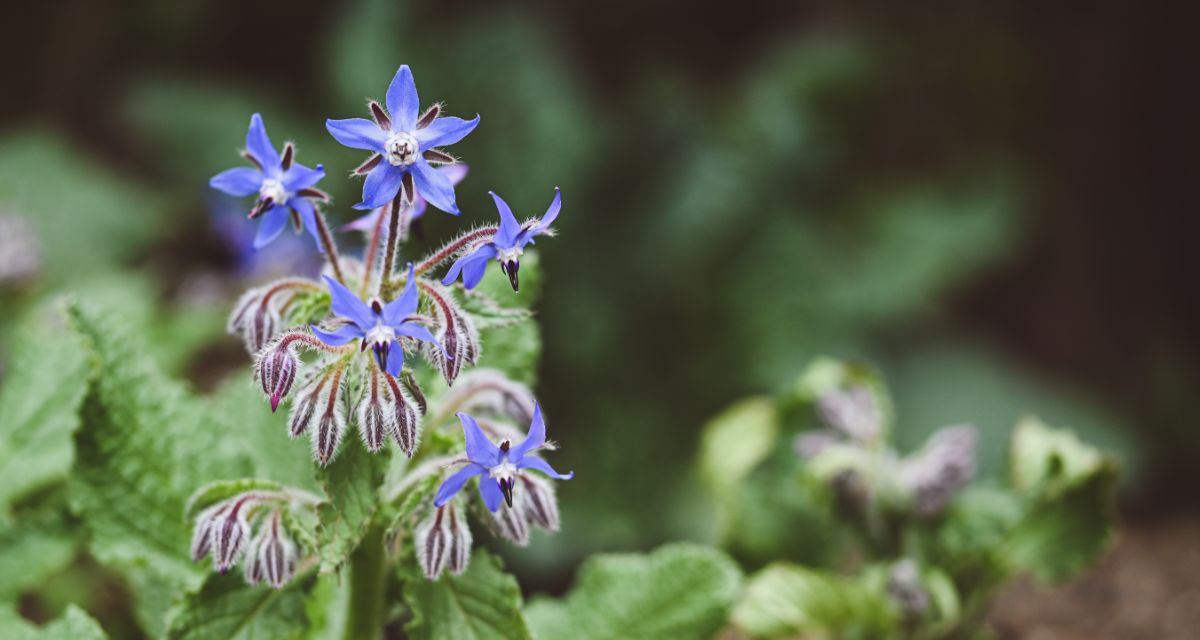
| Plant Name: | Borage |
| When to Sow Seeds: | Direct sow (recommended), As soon as soil can be worked |
| Lighting: | Full sun to part shade |
| Water: | Moderate |
| Minimum Grow Zone: | Annual |
Borage is an interesting and versatile plant. Not only is it a great ornamental flower known for its vibrant blue blooms, but it is a hit with pollinators, one of the best plants you can plant for natural pest control and it’s tasty!
Having a bit of a cucumber-like flavor, both borage leaves and flowers are edible in small quantities and make funky additions to salads or as garnishes and accents on dessert dishes.
When used as a companion plant, borage is one of the best solutions for natural pest control and is often interplanted with tomatoes to repel tomato hornworms!
If you want to try planting this powerhouse little plant, it is best to directly sow it outdoors in mid-spring after all danger of frosts has passed. Borage does not transplant well, so it is generally not worth trying to start plants inside.
After planting, keep your borage well-watered and provide it with full sun to partial shade. Borage will usually flower in June to July, roughly 8 weeks after sowing.
9. Phlox
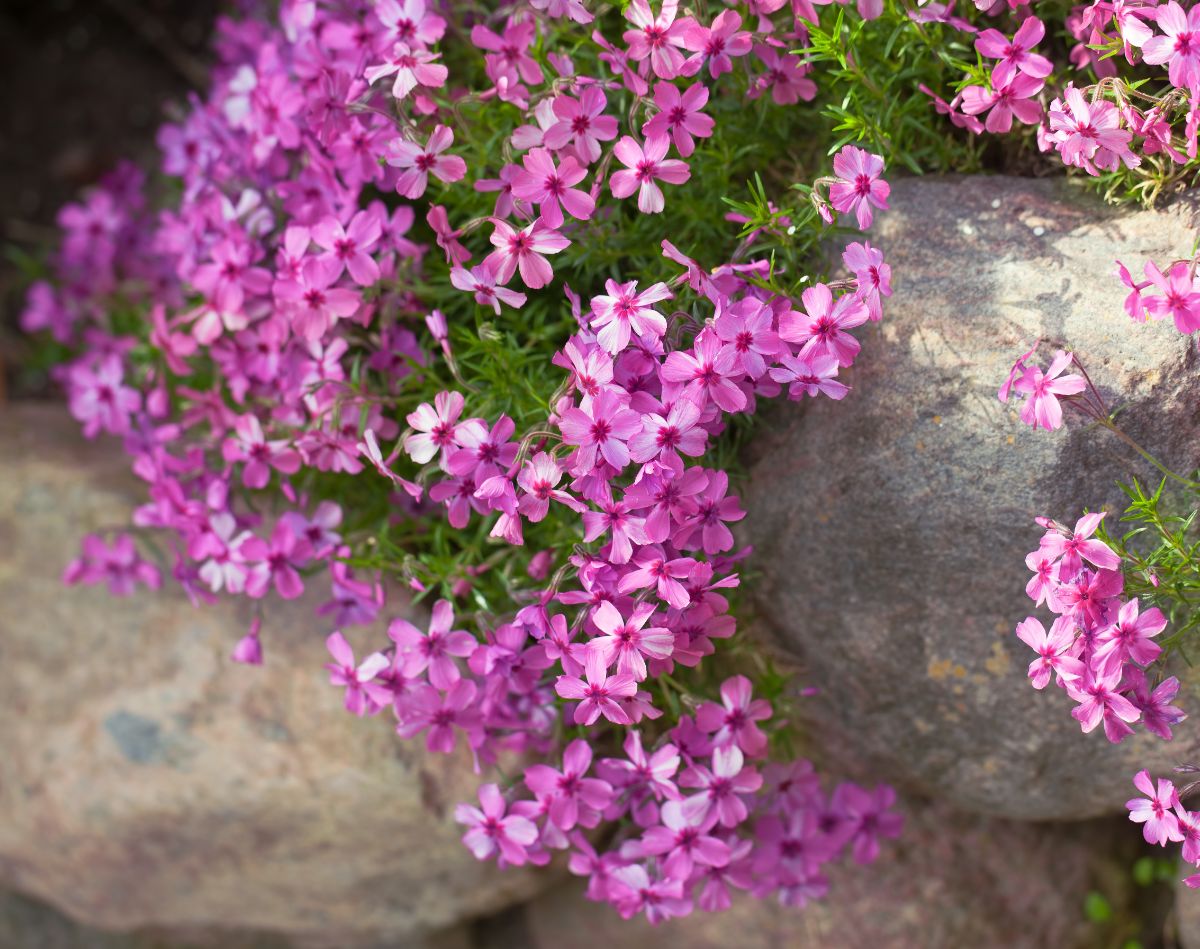
| Plant Name: | Phlox |
| When to Sow Seeds: | Direct sow (recommended), As soon as soil can be worked |
| Lighting: | Depends on variety |
| Water: | Moderate |
| Minimum Grow Zone: | Zone 4 |
Phlox comes in two varieties: tall phlox (which grows up 3’ tall) and creeping phlox (which grows more compactly as a ground cover).
Tall phlox has long lasting blooms and is more of a summertime plant, producing flowers from mid- summer well into early autumn. However, it is creeping phlox that is the real star of springtime.
Creeping phlox produces tons of fragrant pink or white flowers throughout mid to late spring. In fact, its flowers are so abundant that a moon phase is even named after it! The first full moon of April, known as the “pink moon,” is named for creeping phlox’s vibrant pink blossoms, which first appear around this time!
Both creeping and tall phlox are most commonly found as nursery starts and are best planted in spring after all danger of frost has passed. A pollinator favorite, expect your phlox to bring in lots of spring-time garden visitors, including bees, butterflies and hummingbirds.
10. Lantana
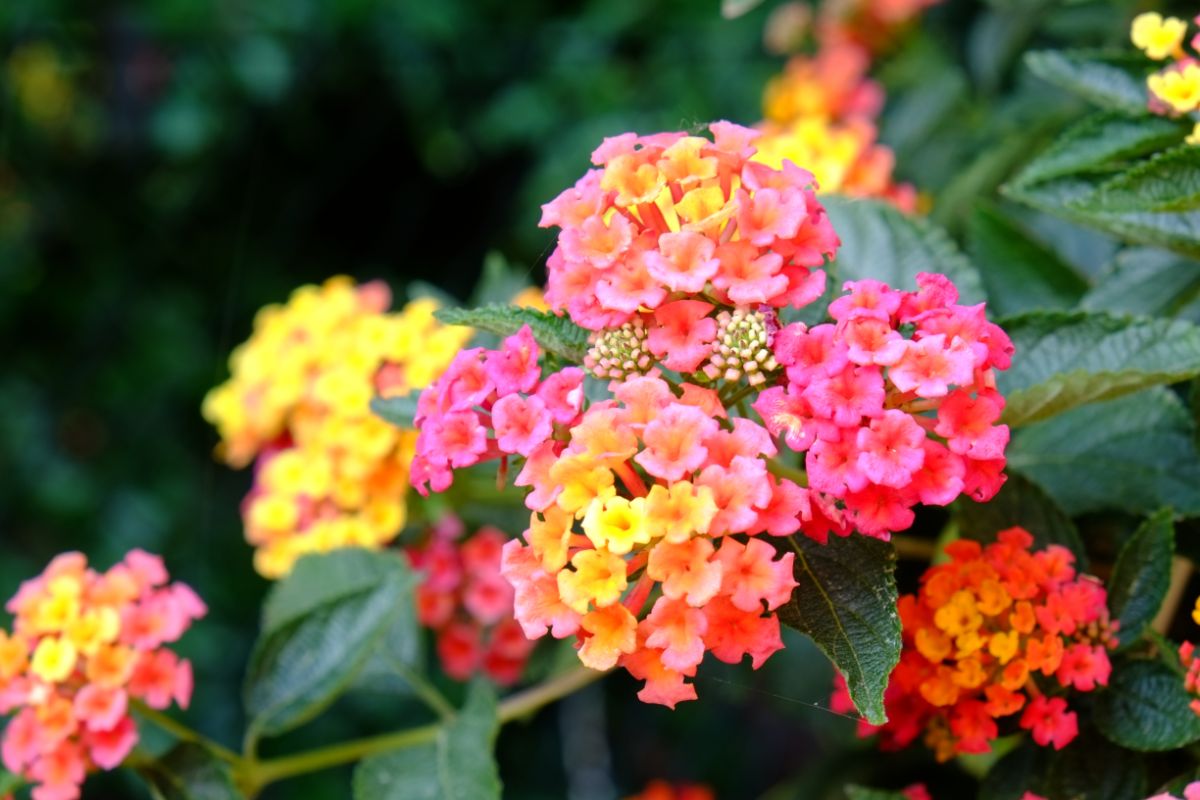
| Plant Name: | Lantana |
| When to Sow Seeds: | Best grown from nursery starts Plant outdoors after danger of frost. |
| Lighting: | Full sun |
| Water: | Moderate |
| Minimum Grow Zone: | Annual |
Another pollinator flower, lantanas are not cold hardy so they should not be planted out in early spring. Instead, wait to plant lantana until around May or after your last frost date. Because lantanas really prefer warm temperatures, growth in spring may be rather slow until temperatures rise.
Lantanas come in several different varieties, some growing well over 4’ tall, while others staying much more compact and maxing out around 1 to 2’ tall.
Known for their long-lasting, colorful blooms, lantanas love full sun and well-draining, slightly acidic soil. That said, they are pretty adaptable and can tolerate a range of soils too.
11. Dahlias
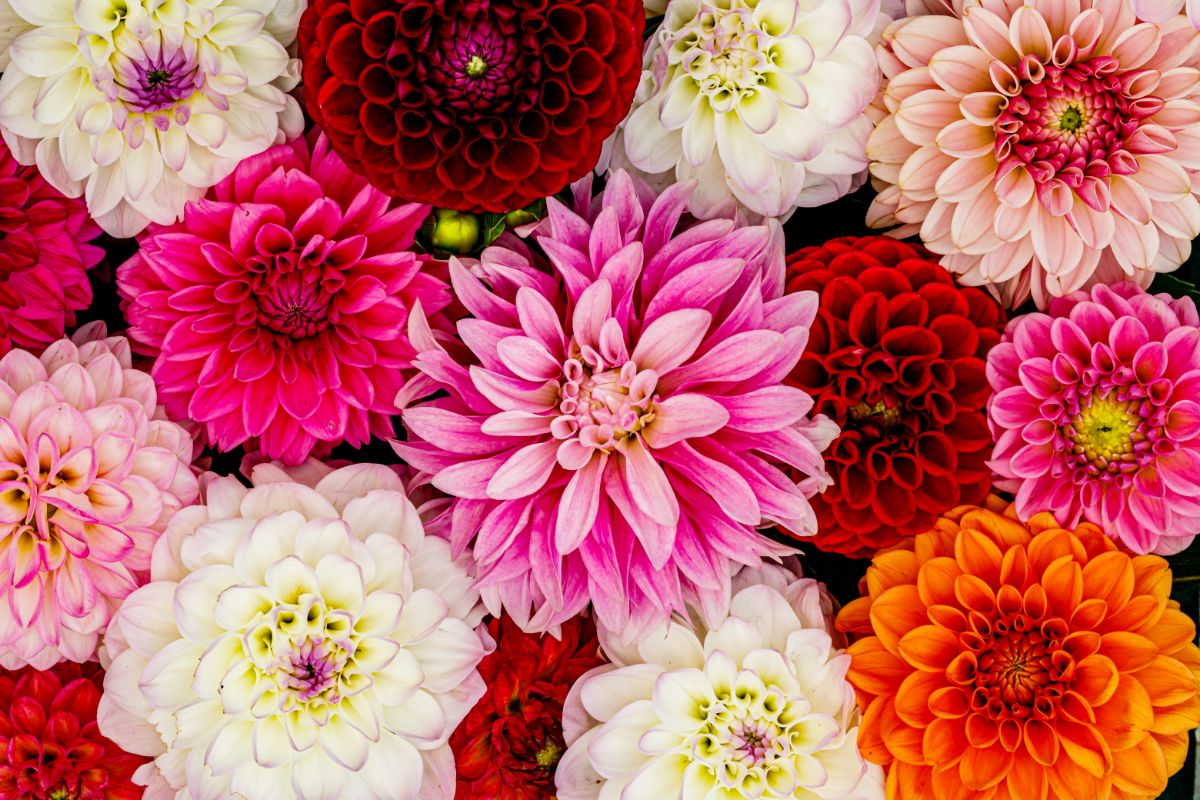
| Plant Name: | Dahlias |
| When to Sow Seeds: | Best grown from tubers Plant outdoors after danger of frost. |
| Lighting: | Full sun |
| Water: | Moderate to high |
| Minimum Grow Zone: | Zone 7 |
Dahlias come in almost every color imaginable and flowers can range in size from small blooms to massive flowers the size of dinner plates (hence the name “dinner plate dahlia”).
If you live in a cooler climate, below zone 8, dahlia planting may already be a part of your annual garden maintenance schedule. That’s because dahlias are not cold-hardy plants and their tuberous roots must be dug up in cold regions in autumn and overwintered indoors. When spring arrives, however, it’s time to plant your dahlias!
Dahlias are planted outdoors in mid- to late spring when soil is warm and all danger of frost has passed. If you live in an area with a very short growing season, you can even start your dahlia tubers indoors by planting them in 1-gallon pots 2 to 4 weeks before your last frost date. When properly cared for, expect your dahlias to begin blooming by the middle of summer.
As some dahlias can grow quite large, they are often supported with stakes. In autumn, after the top of the plant dies back, dig up your tubers and store them in a cool, dry location until spring.
12. Gladiolus
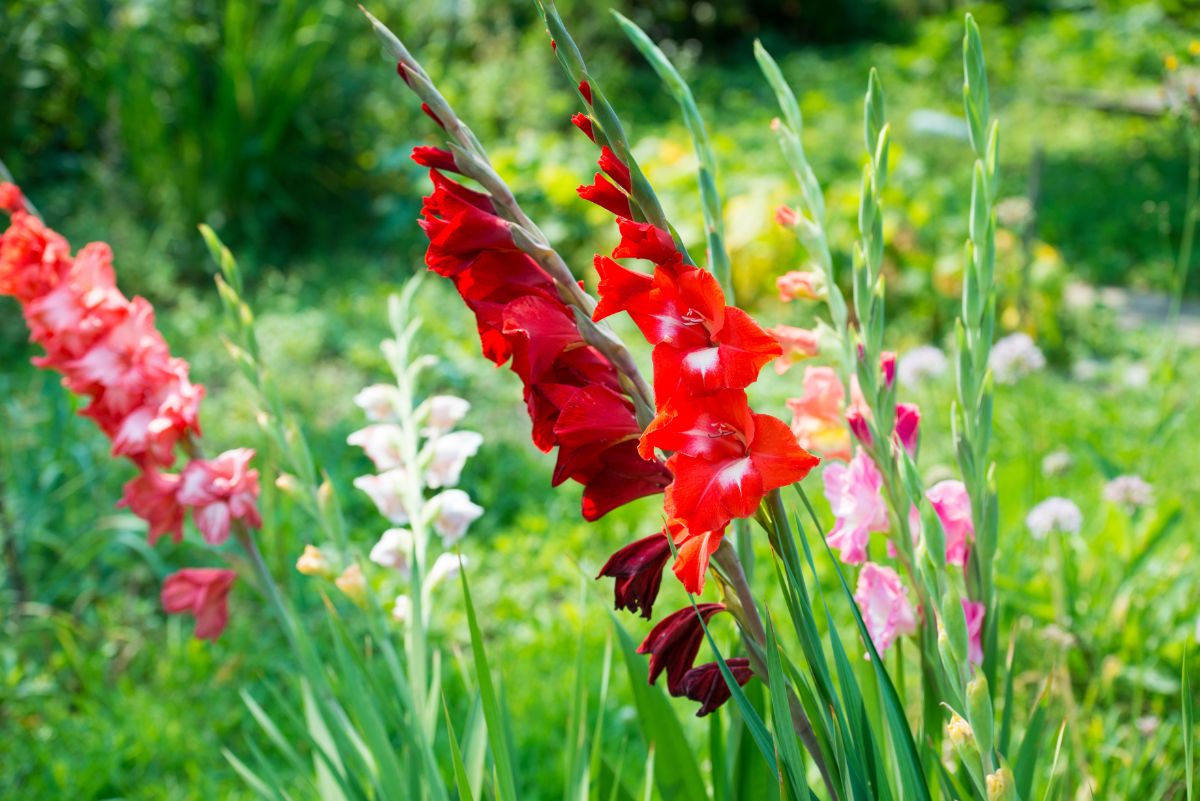
| Plant Name: | Gladiolus |
| When to Sow Seeds: | Best grown from corms Plant outdoors 2 weeks before last frost date. |
| Lighting: | Full sun |
| Water: | Moderate |
| Minimum Grow Zone: | Zone 8 |
Gladiolus are known for their bright spires of colorful flowers that come in almost every color, including yellow, purple and red.
Hardy to zone 7, like dahlias, gladiolus can be overwintered indoors in cooler regions by digging up their underground stems (known as “corms”) and storing them in a cool, dry location.
A great plant for spring gardening, gladiolus are planted in mid-spring, about two weeks before your last frost date. Because flowers are not long-lasting, you can prolong your gladiolus’ bloom time by staggering planting, planting corms every two weeks throughout spring and early summer until July.
Native to South Africa, gladiolus can tolerate full sun to partial shade; however, they do best with a regular watering schedule.
13. Bleeding Hearts
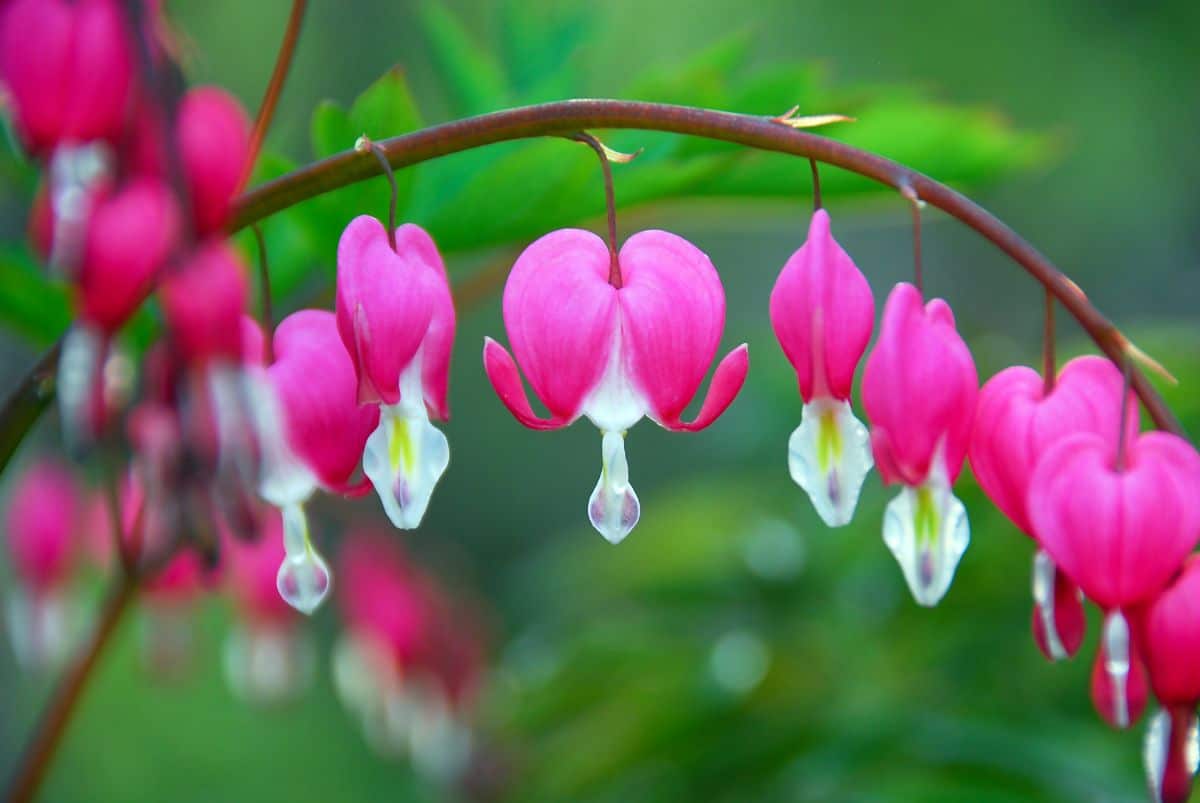
| Plant Name: | Bleeding Hearts |
| When to Sow Seeds: | Best grown from bare roots Plant outdoors after danger of frost. |
| Lighting: | Partial shade |
| Water: | Moderate |
| Minimum Grow Zone: | Zone 3 |
If you have a shady yard, you can’t go wrong with bleeding hearts. Preferring light shade, these natives of eastern Asia and North America naturally grow in wooded environments, although they can adapt to full sun when provided with lots of moisture.
Growing up to 3’ tall, bleeding hearts are low maintenance plants and are naturally resistant to damage from deer.
Often bleeding hearts are sold as dormant bare roots that are planted in early spring after the danger of frost has passed. Sprouting quite readily, roots generally establish themselves quickly and will produce leaves the same year they’re planted. However, you’ll need to wait until the following spring for your new plants to flower.
14. Sunflowers
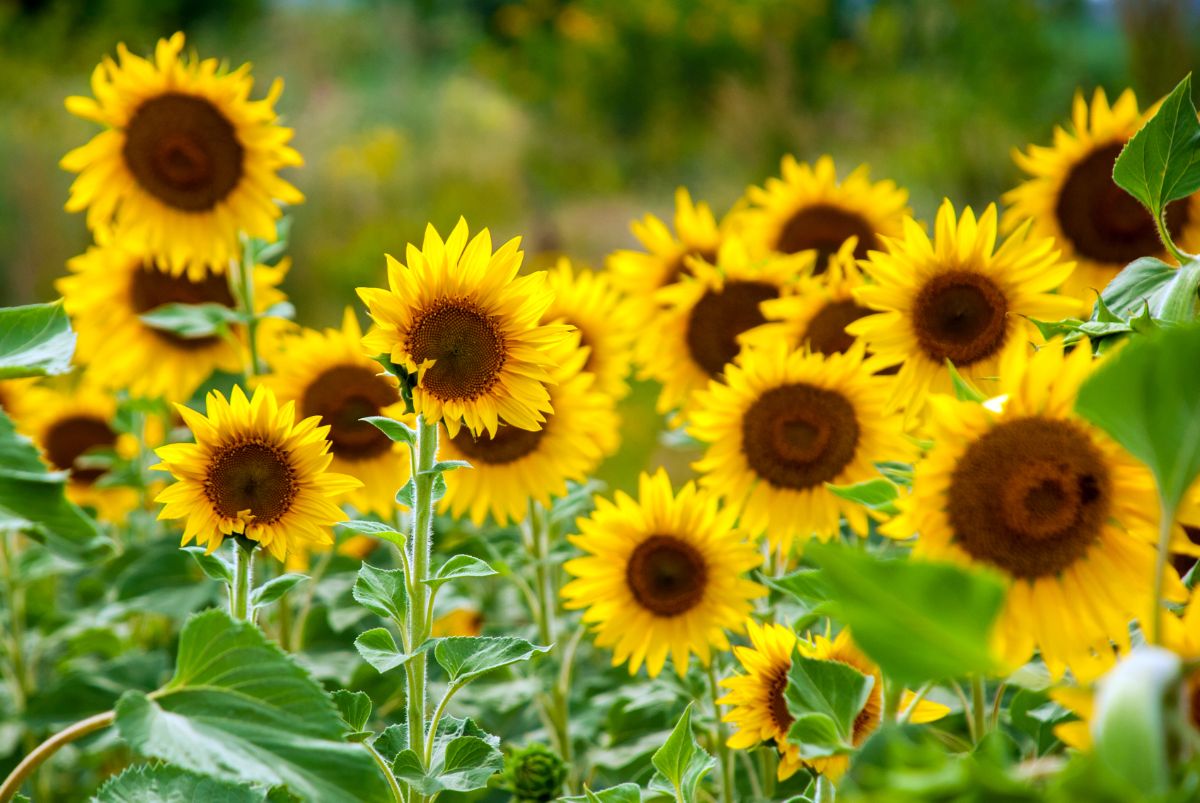
| Plant Name: | Sunflowers |
| When to Sow Seeds: | Direct sow (recommended), After danger of frost has passed. Seeds germinate when soil is above 60F. |
| Lighting: | Full sun |
| Water: | Moderate |
| Minimum Grow Zone: | Annual |
Whether you want to attract birds and pollinators to your garden or you’re simply hoping for some cheery cut flowers or dried sunflower seeds to snack on, sunflowers are a fun and easy plant to grow.
Coming in both dwarf and mammoth varieties (and every size in between!), sunflowers most often bloom golden-yellow petals, but they can come in a range of colors too, from pristine white to a deep burgundy.
Fast to grow, sunflowers are not frost hardy, so seeds should only be planted in late spring after the danger of frost has passed. Sunflowers also don’t transplant well, so it’s best to directly sow them outdoors in warm soil. Seeds will germinate in 10 to 14 days, while it can take up to 11 to 18 weeks for flowers to appear when grown from seed.
15. Morning Glories
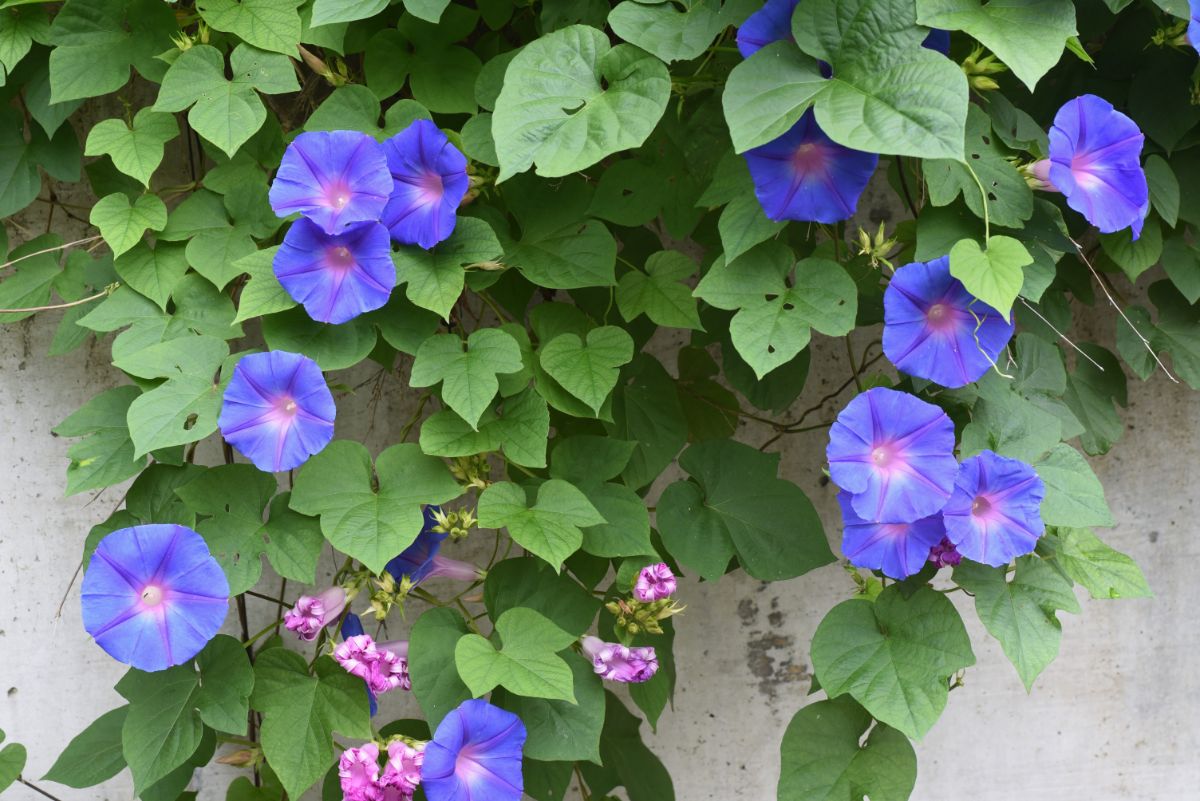
| Plant Name: | Morning Glories |
| When to Sow Seeds: | Direct sow (recommended), After danger of frost has passed. |
| Lighting: | Full sun |
| Water: | Moderate |
| Minimum Grow Zone: | Zone 9 |
Morning glories are members of the Convolvulaceae family, which contains over 1600 species, most of which are vining plants.
Morning glories are prized for their range of colorful blooms and their low maintenance growing requirements. However, if you’re not careful, your morning glories may spread, so try to keep them contained by encouraging them to grow up garden stakes, trellises or netting.
One particularly interesting type of morning glory is known as the moonflower or moon vine, which sports large, white, highly fragrant night-blooming flowers that work well in night gardens. Moonflowers are one of the best foods for nocturnal moths too.
Tender annuals, both morning glories and moonflowers do not tolerate cold temperatures and so should only be planted in late spring or early summer when the ground is warm and all dangers of frost have passed. Additionally, because of their twining nature, these plants don’t transplant well and should only be directly sown outdoors.
16. Black Eyed Susan
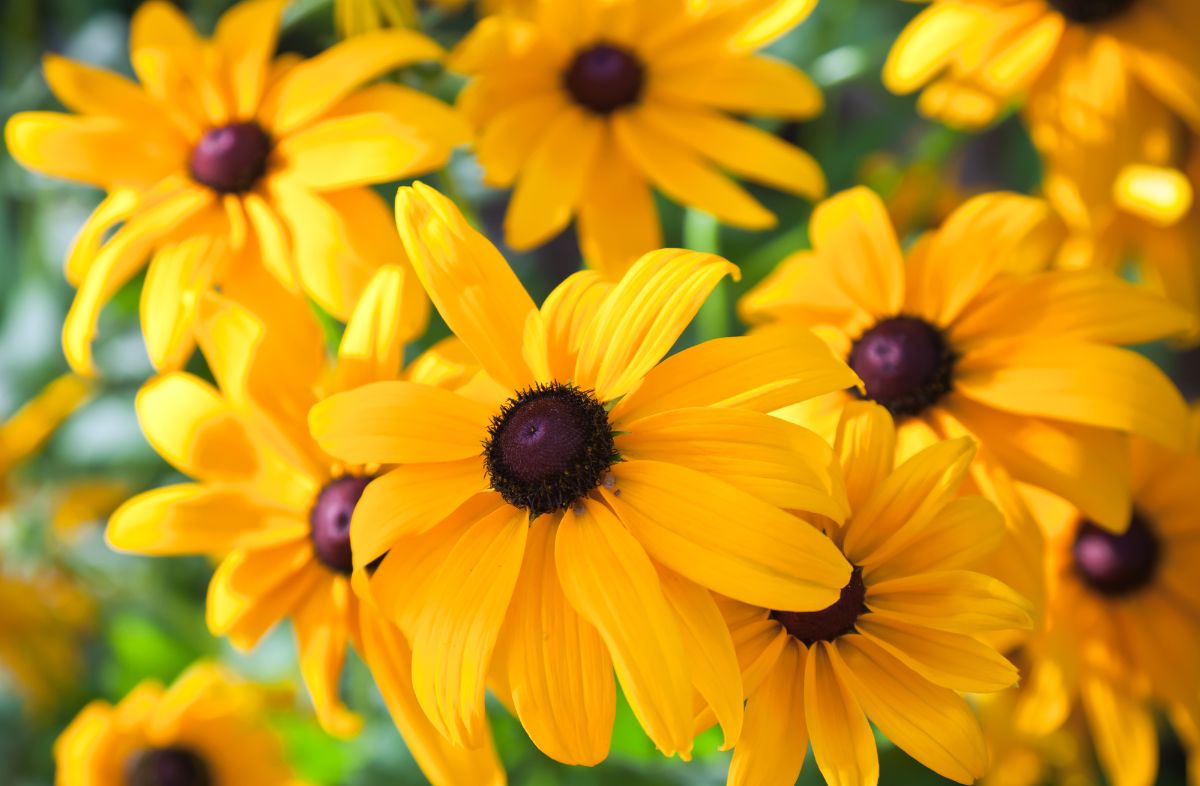
| Plant Name: | Black Eyed Susan |
| When to Sow Seeds: | Transplant, Start seeds indoors 5 to 7 weeks before last frost date Direct sow, As soon as soil can be worked |
| Lighting: | Full sun |
| Water: | Low to moderate, semi-drought tolerant when established. |
| Minimum Grow Zone: | Zone 3 |
Black eyed Susan are vibrant perennial flowers native to North America. Mostly seen with warm, golden-yellow petals surrounding a highly contrasting dark center, some varieties have dark, bronze-toned petals instead.
While you can purchase black-eyed Susan seeds, they are most often grown from nursery starts. However, as prolific self-seeders, once they’re established themselves in your garden, expect these gorgeous plants to spread and spread.
Blooming from June to September, black eyed Susan can be planted anytime from spring to early fall, but the earlier you get them in the ground in springtime, the sooner you’ll be rewarded with flowers.
To encourage your plants to produce more blooms, be sure to deadhead old flowers regularly so your plant can redirect energy towards new growth.
17. Comfrey
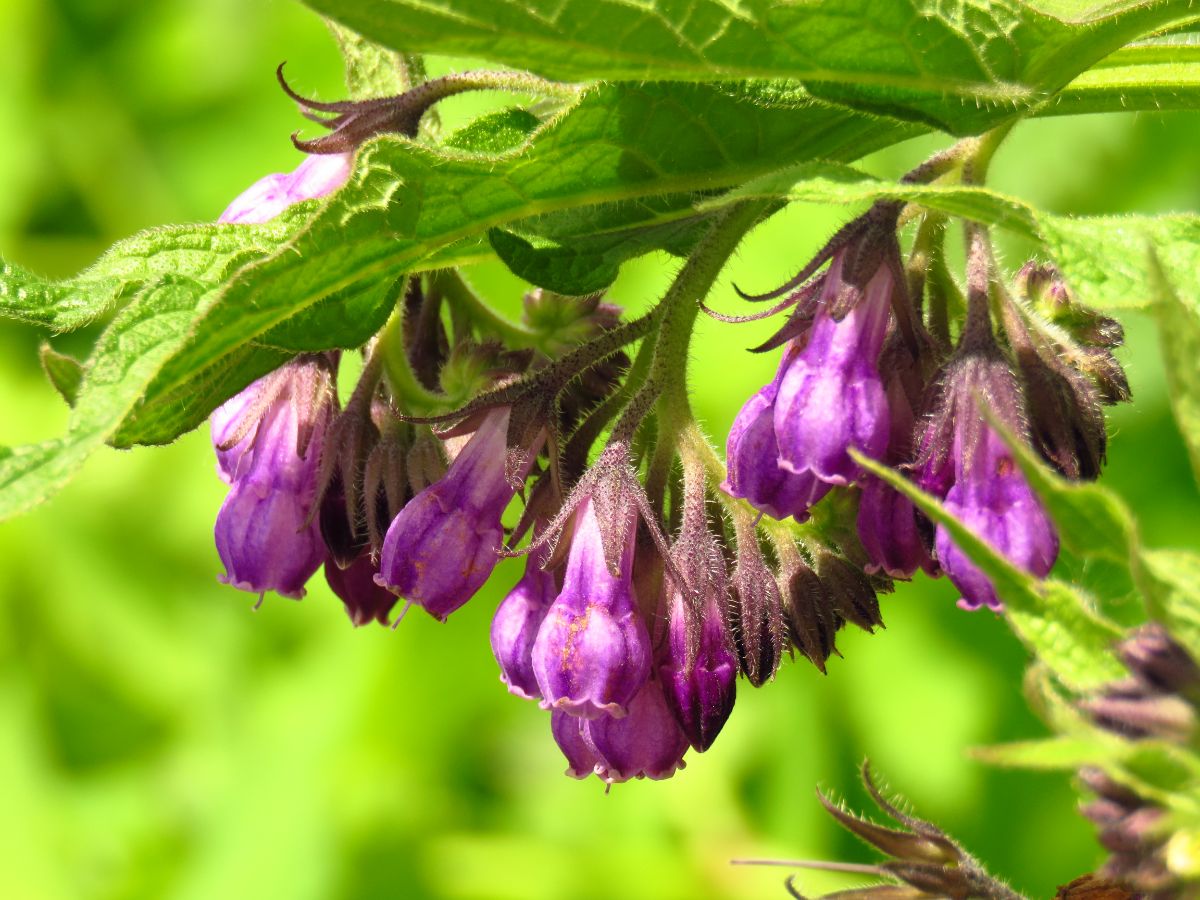
| Plant Name: | Comfrey |
| When to Sow Seeds: | Direct sow (recommended), 3 weeks before last frost date |
| Lighting: | Full sun to part shade |
| Water: | Moderate |
| Minimum Grow Zone: | Zone 3 |
Comfrey is a super easy to grow native perennial that is one of the best plants to try if you want to encourage bees and other pollinators to take up residence in your garden.
Comfrey seeds can be started indoors; however, they tend to grow better when directly sown outside about 3 weeks before your last frost date. Bell-shaped, pale purple flowers will begin to appear in late spring to early summer and pollinators won’t be far behind!
Besides being a wonderful pollinator flower, comfrey leaves can be used to make a well-balanced organic fertilizer for your garden too. The leaves themselves contain lots of nitrogen, phosphorous and potassium (NPK), otherwise known as the essential nutrients which plants need to thrive. Fertilizer can be made by composting leaves or by steeping them in water to make a “compost tea.”
A word of caution about comfrey though. Although it’s definitely a beneficial plant to have, comfrey has a tendency to spread, so consider container planting your comfrey or placing your plants in a raised bed garden if you don’t want lots of comfrey all over the place. Mature plants will grow up to 3’ tall and serve as striking backdrops to herb beds and native plant gardens.
18. Cosmos
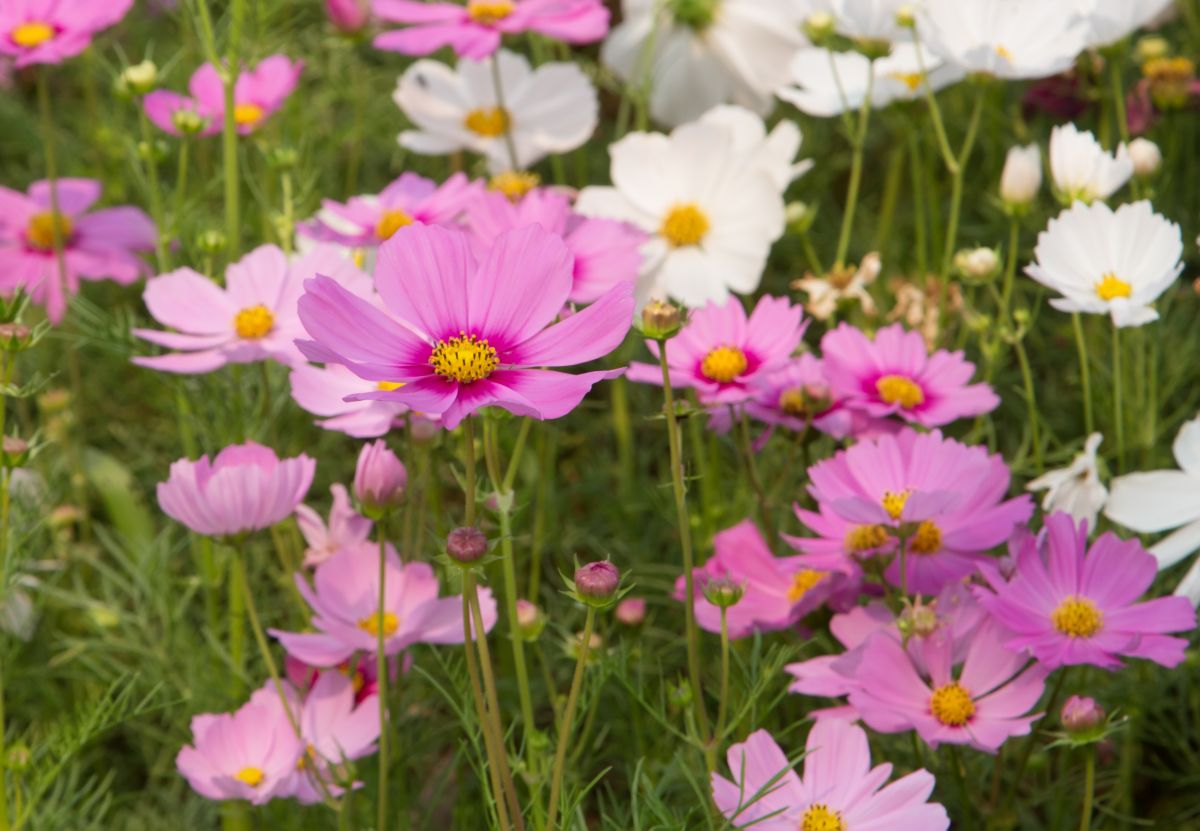
| Plant Name: | Cosmos |
| When to Sow Seeds: | Transplant, Start seeds indoors 5 to 7 weeks before last frost date Direct sow, After last frost date |
| Lighting: | Full sun |
| Water: | Low to moderate, semi-drought tolerant when established. |
| Minimum Grow Zone: | Annual |
Cosmos come in a range of pinks and white and have feathery foliage that gives the plant a very feminine look. Great in cut flower arrangements, cosmos are perfect pollinator plants too and are sure to attract bees and butterflies.
Blooming from early summer to fall, flowers are rather short lived and only last about 4 to 6 days. To encourage your cosmos to produce more flowers, deadhead your plants regularly. Deadheading your plants also keeps these prolific self-seeders from seeding themselves throughout your garden. If you like cosmos, however, just let these annual flowers go to seed and you’ll have lots of bright blooms for years to come.
Cosmos don’t do well in the cold and are best planted outdoors in late spring (usually May), after all danger of frost has passed. Plants take about 7 weeks to mature enough to produce flowers. To speed this process along, you can also try planting cosmos indoors about 4 to 5 weeks before your last frost date.
19. Zinnias
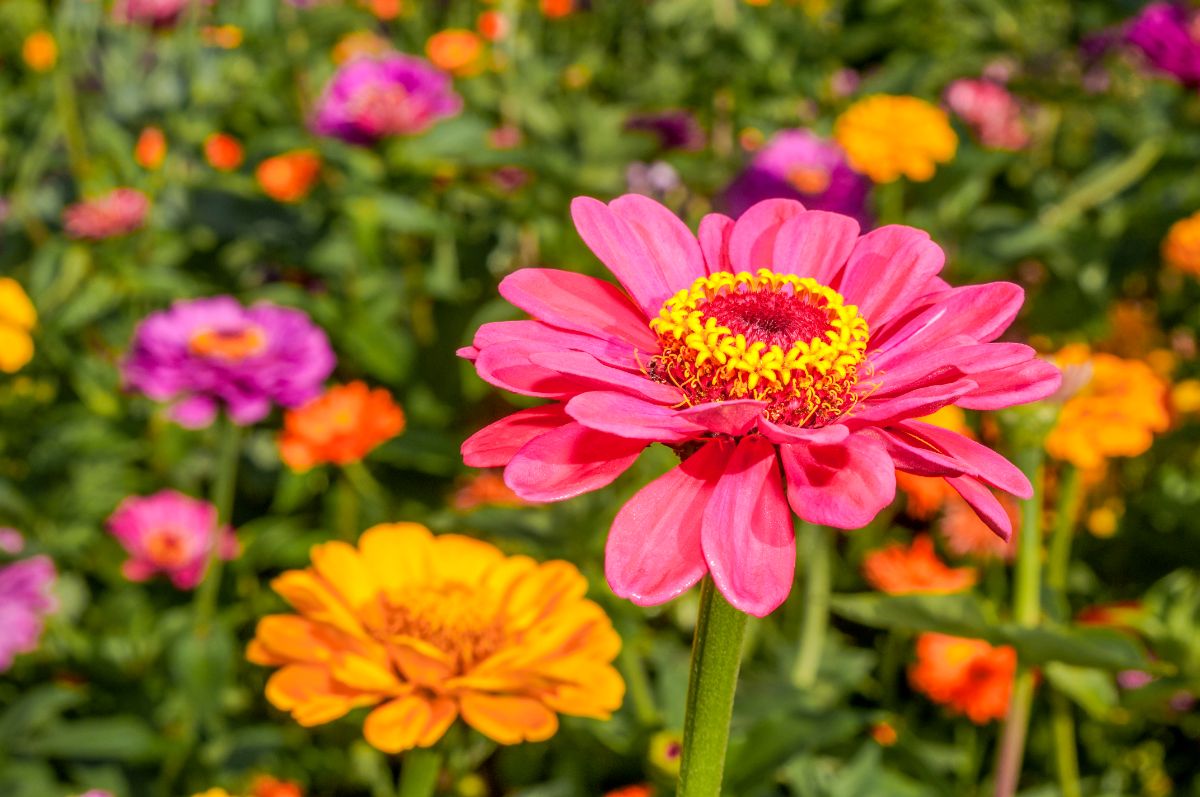
| Plant Name: | Zinnias |
| When to Sow Seeds: | Transplant (recommended), Start seeds indoors 4 weeks before last frost date |
| Lighting: | Full sun |
| Water: | Moderate to high |
| Minimum Grow Zone: | Annual |
Colorful zinnias are another excellent choice for spring planting. Just sow seeds outdoors after your frost date or, for earlier flowers, start them inside about 4 to 6 weeks prior to transplanting. After planting, zinnias will usually flower in about 2 months.
Zinnia flowers look quite similar to dahlias and they are often mistaken for each other. Zinnias come in range of sizes, from dwarf plants to 4’ tall varieties, and flowers can be found in pink, red, white, green, yellow and other colors.
A great plant to use to attract beneficial insects and pollinators (especially butterflies) to your garden, look for single, rather than double-bloom zinnias if you can. This is because double bloom flowers are more difficult for pollinators to feed form.
20. Lunaria
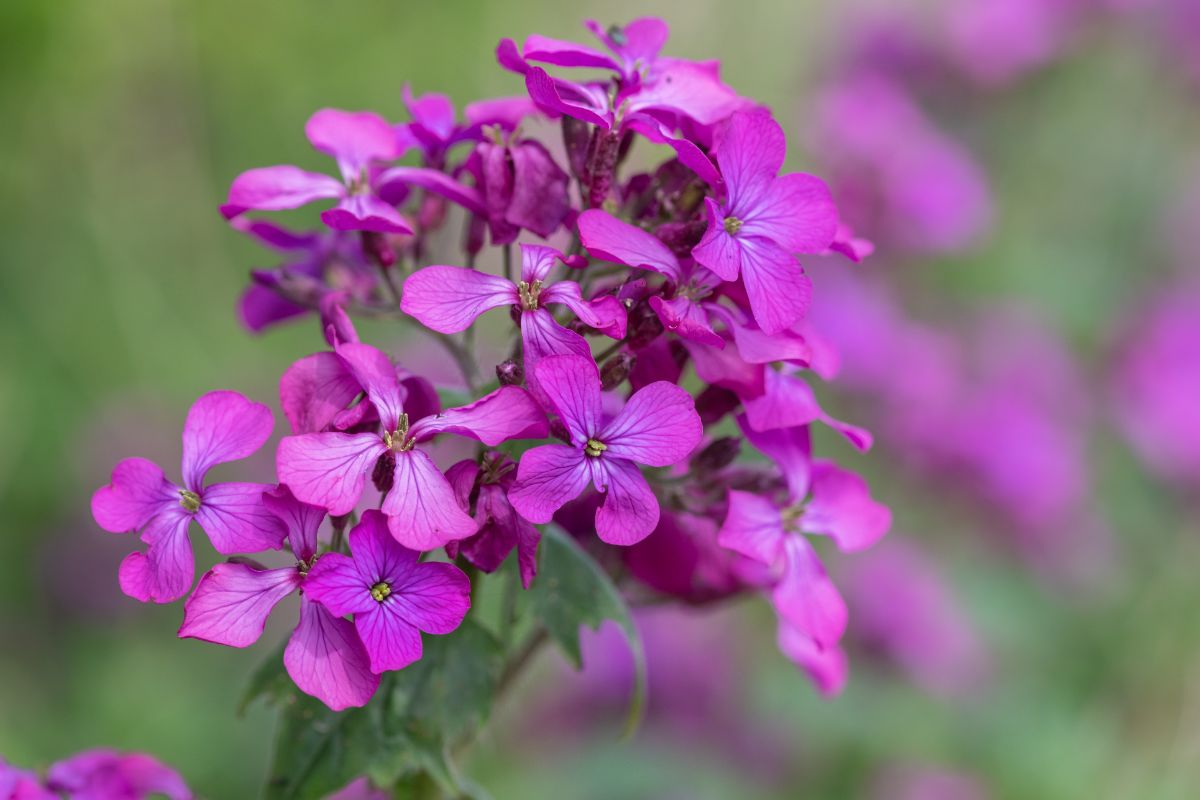
| Plant Name: | Lunaria |
| When to Sow Seeds: | Direct sow, After last frost date |
| Lighting: | Full sun to part shade |
| Water: | Moderate |
| Minimum Grow Zone: | Zone 4, Biennial |
Also known as honesty, dollar plant, money plant or moonwort, lunaria may have a lot of nicknames, but its dried seed pods are very distinct. After blooming clusters of deep purple flowers, lunaria produces flat seed pods that are frequently used in dried floral arrangements thanks to their recognizable silvery sheen.
While an unusual plant to spot in most gardens, lunaria is a wonderfully satisfying plant to grow. These plants grow as biennials, so you’ll need to wait a year for them to flower, but when they do, you will be rewarded with cheerful blooms that pollinators love.
Easy to grow from seed, lunaria can be directly sown outdoors in spring through fall, or you can start seeds indoors and transfer them outside after the danger of frost has passed.
21. Bells of Ireland
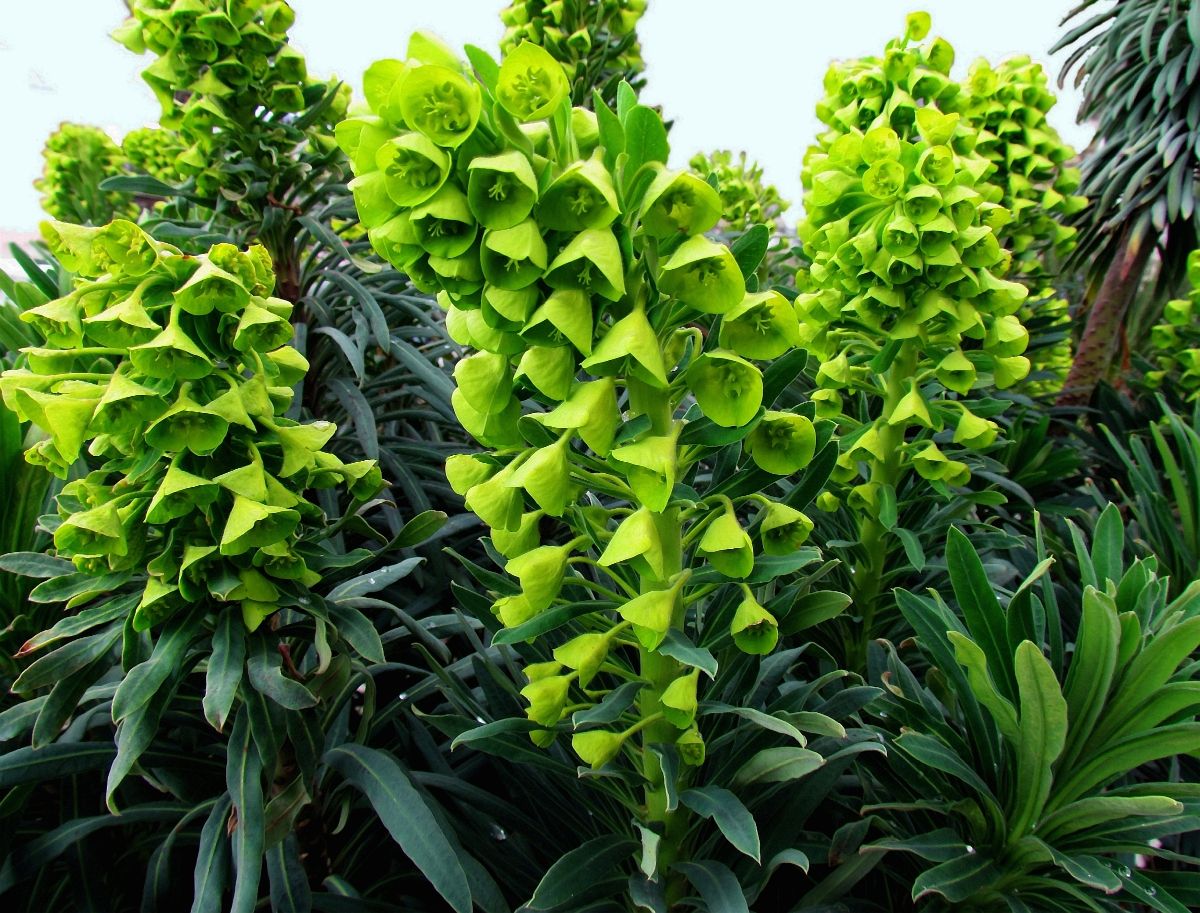
| Plant Name: | Bells of Ireland |
| When to Sow Seeds: | Direct sow, When soil temperatures are between 50 and 60F |
| Lighting: | Full sun to part shade |
| Water: | Moderate |
| Minimum Grow Zone: | Annual |
Bells of Ireland are wildly unusual looking plants with tall spires of bright green flowers. If you’re looking for some “wow factor” in your garden arrangements, you’ll definitely get it with these sensational blooms.
Bells of Ireland can be directly sown outdoors or started from seed inside about 8 weeks before your last frost date. Just keep in mind that are only hardy to zone 9, so in cooler regions, these plants will only grow as annuals.
A staple in cut flower gardens, bells of Ireland dry very nicely too for preserved arrangements. Just provide these easy-care plants with consistent moisture and full, bright sun for optimal growth.
Where should I buy my plants from?
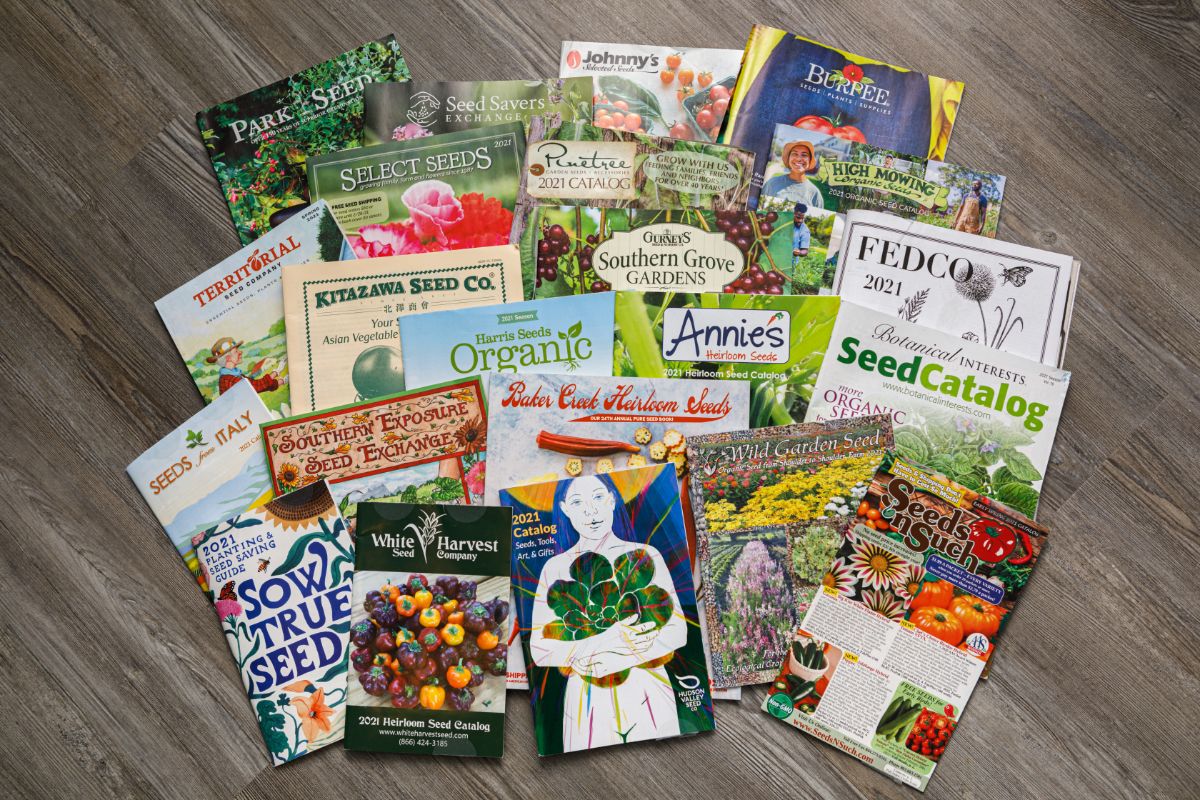
If you have local nurseries you like to purchase plants at, then, by all means, look for your spring flowers there. However, in many areas, many nurseries don’t open until April or May, so you may need to get creative to find flowers earlier than that.
Seed catalogs are one great option if you’re willing to grow flowers from seed. Often, seed catalogs are mailed out in December or January, so try to get on catalog mailing lists before then to ensure you get a copy.
Once you have your catalog, keep a lookout online for when your favorite seed websites start accepting orders. Some popular companies and highly coveted plant varieties sell out surprisingly fast!
If you don’t want to be on a mailing list, you can of course browse seed companies’ entire catalog online as well. Some popular seed companies that offer lots of flower seeds for spring planting, include Baker Creek, Fedco and Johnny’s.
If you’re looking for dahlia tubers or other rootstock, you can often find them at big box stores, but they are usually available from seed catalogs as well, such as Fruition Seeds. A full range of dahlia tuber varieties are available on Amazon too.
Finally, if you want to plant seedlings, they are sometimes available on websites like Etsy, but you’ll likely need to wait until your local nurseries open in spring. Even though you may have to wait a bit longer to purchase nursery starts, because they are already established plants, you can plant them a bit later and still get blooms on time.
Nursery starts are usually easier to work with too, produce flowers quicker and are less likely to be damaged by untimely frosts if they occur.
How to protect spring flowers from late frosts?
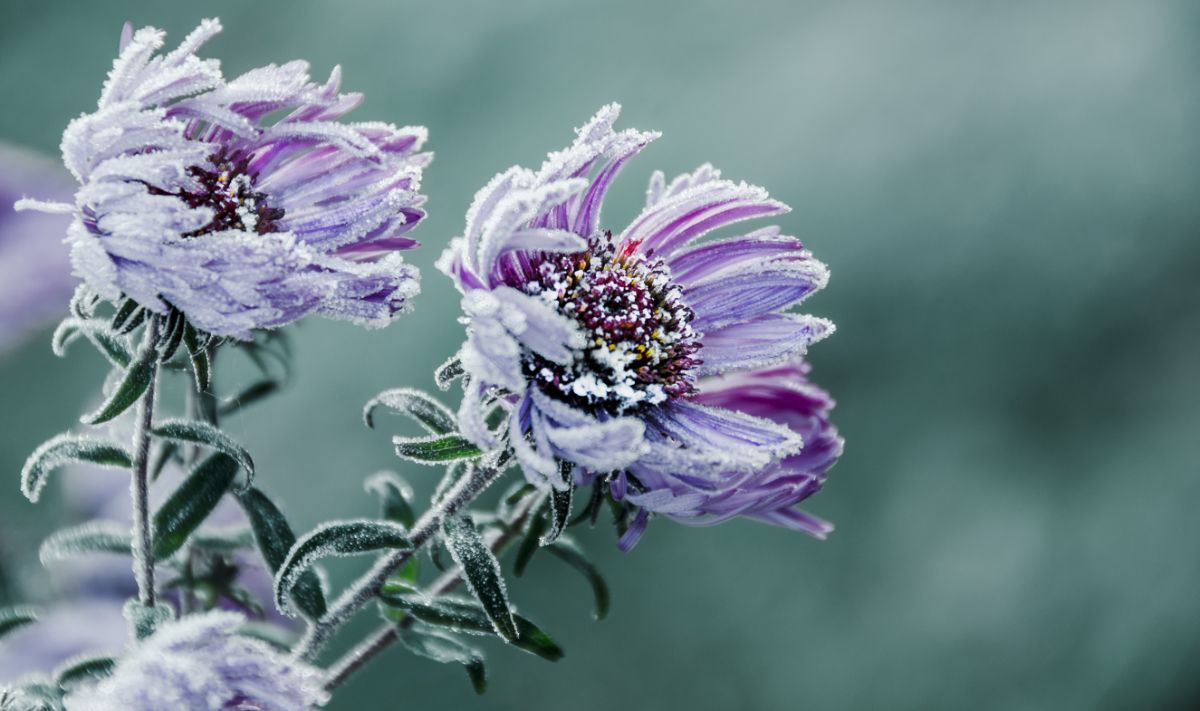
Despite our best efforts, weather is unpredictable and unseasonably cold weather snaps or freezes are bound to happen from to time. Sometimes these cold spells even happen well after our last predicted frost date when we have our tender plants already planted outdoors.
It is helpful to remember that first and last frost dates are only predictions and aren’t certain. They are based on the average day when frost occurs, but any given year can have unexpected weather patterns.
That’s why it’s particularly important that you have some backup plans at hand when planting flowers early in spring, just in case a late frost is predicted.
- Follow planting guidelines. The easiest way to avoid issues with freezing temperatures, is to closely follow all planting instructions on nursery labels and seed packets.
Certain plants are more susceptible to frost than others, so avoid planting frost tender plants out too early. If your planting instructions tell you not to directly sow seeds outdoors until after your frost date, be sure to follow those instructions. No matter how much we may want to plant our sunflowers outside in March, it’s not a good idea!
- Use some frost blankets. Frost blankets are lightweight sheets of fabric or plastic that are spread over plant beds to protect seedlings from periods of frost. While they won’t protect your plant from snow or really hard freezes, they can make the difference between your flowers surviving a chilly night or not.
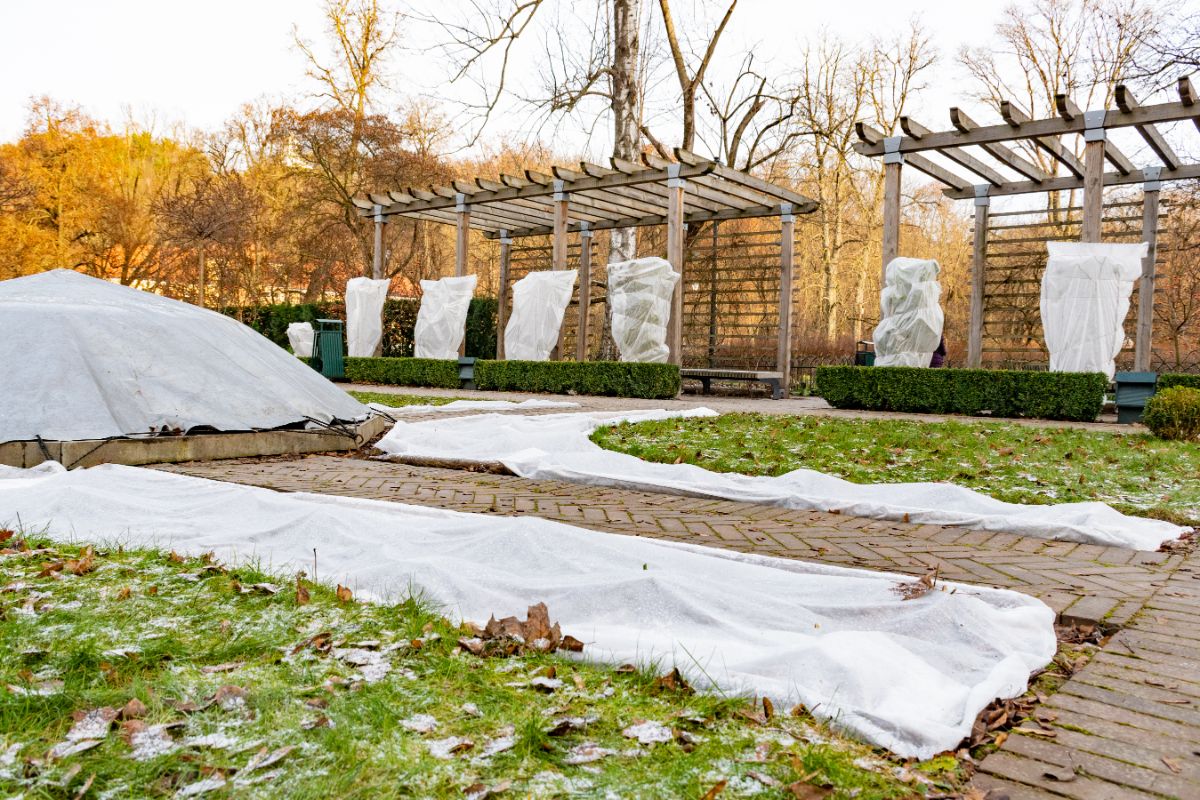
If you don’t want to purchase frost blankets, any lightweight material will work too, such as burlap, fleece blankets or cotton bed sheets. Just make sure anything you use isn’t so heavy that it will weigh down or damage delicate plant stems and take care to remove your covering after the threat of frost is over.
If your blanket seems to be too heavy for your seedlings, try propping it up with some stakes, bricks or rocks and securing it in place with some heavy rocks or landscape staples.
- Build some cold frames. In early spring, there is nothing like cold frames or hoop houses to extend your growing season. If you live in a cold region, adding one to your gardening setup can often mean that you can set plants out days or even weeks earlier than you otherwise would.Hoop houses and cold frames can be made as simply or as elaborately as you like. One good, easy set up is to secure some cut hula hoops into the ground with rebar and fasten some plastic sheeting or floating row covers to the framework. Like frost blankets, this won’t protect plants from hard frosts, but it will help a lot!
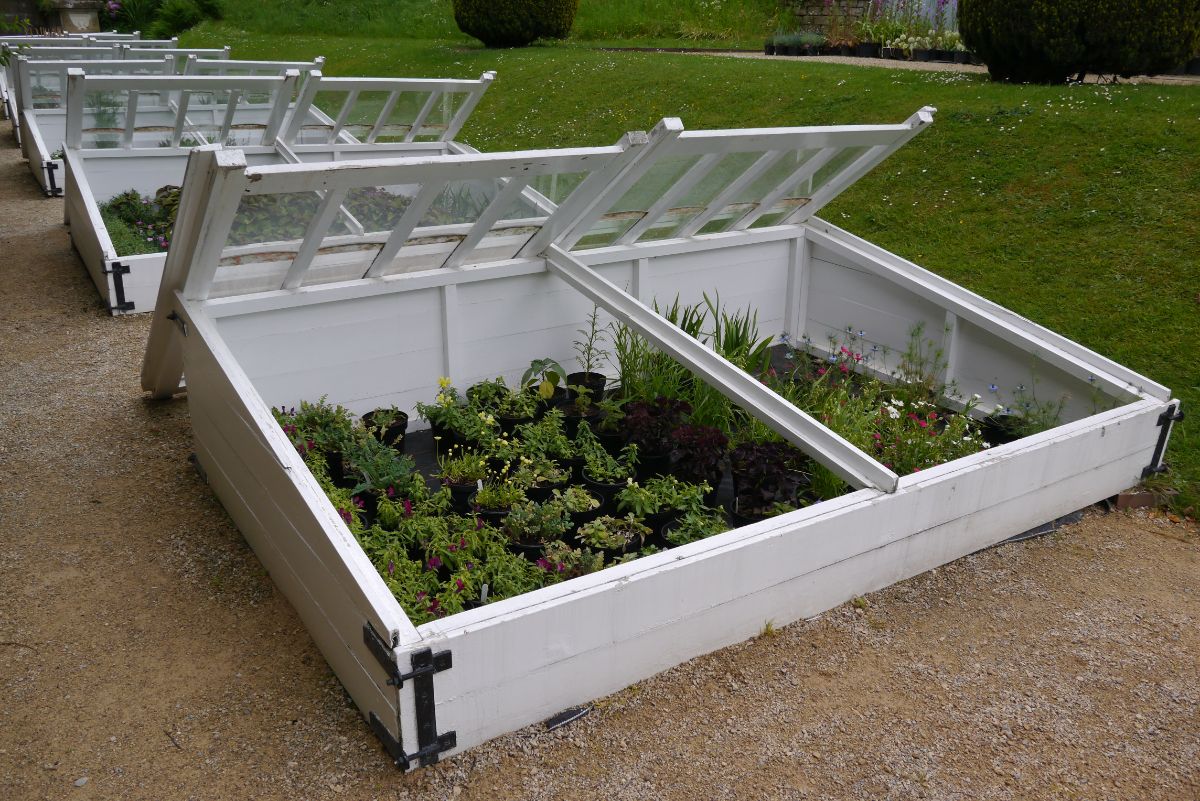
- Water well before a freeze. It may seem odd, but if your plants are already planted outdoors and a frost is on the forecast, give your plants a good, thorough watering. Watering your plants well before a freeze can help them tolerate the cold a bit better.This is because water works as an insulator and warm water can release warmth into the surrounding soil for awhile after you water. Additionally, plants that are underwatered are more susceptible to freezing, so be sure to give them a good drink!
- Bring plants inside. This one is obvious, but if you can bring tender seedlings inside, do it. It’s your safest bet when it comes to protecting them from frost.While you don’t want to dig up a newly planted garden, container plants or seedling trays that were set outside to harden off are easy enough to move back indoors. Just put them outside again when temperatures rise.
Because some plants, particularly ornamental flowers, are often toxic, take care if you have small children or curious house pets and place your plants out of the way in a garage or room with a secure door.
- Add some mulch. Natural mulches, like wood chips and straw, are amazing insulators and help protect tender plant roots. Although mulch shouldn’t be used on brand new seedlings that are just sprouting as mulch can smother them, it’s a great idea to spread fresh mulch under any new flowers you add to your garden.Not only will mulch help protect your plants from light frosts, but it can shield plant roots from hot summer temperatures, reduce weeds and help soil retain moisture better too!
- Try some plant protectors. Plant protectors come in so many shapes and sizes and are ideal for protecting individual plants from occasional frost. In fact, having some on hand is great insurance if you want to start planting early in the spring.
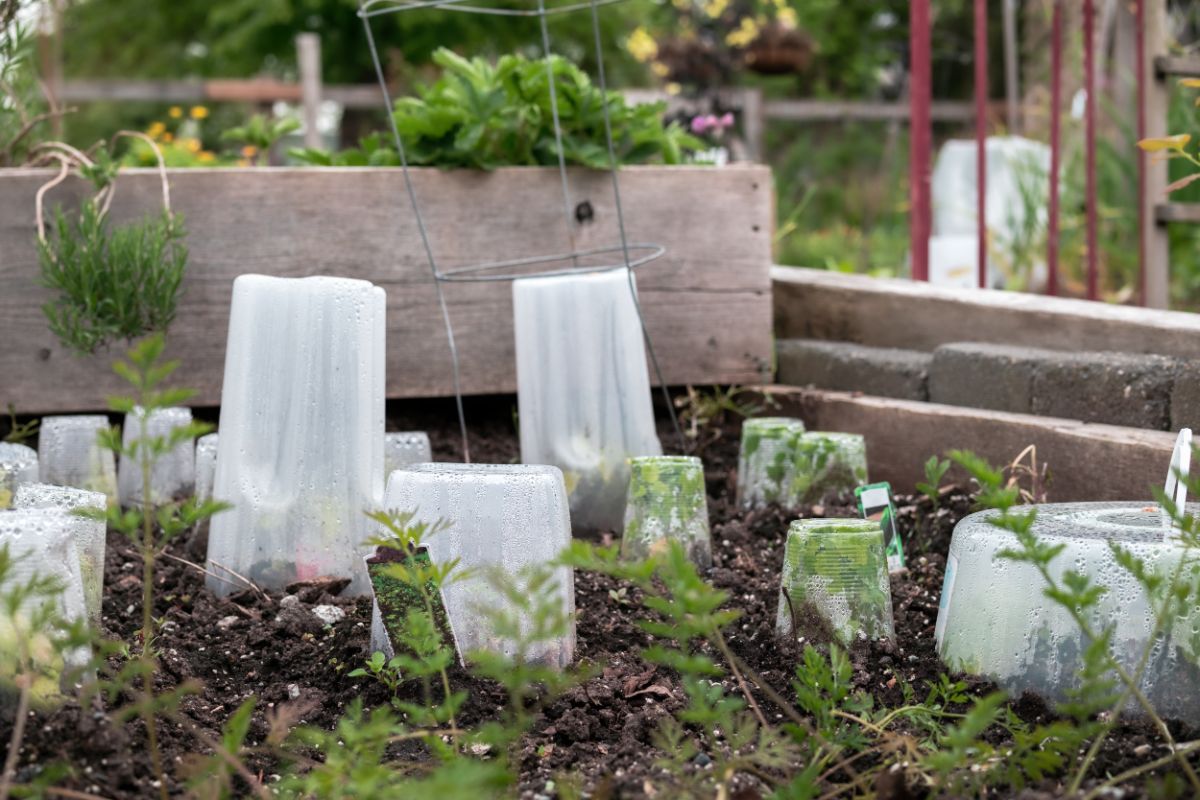
You can make your own budget-friendly plant protectors from almost anything out of your recycling bin: empty tin cans, plastic soda or water bottles with the tops cut off, cardboard boxes or plastic buckets.
Simply invert your “protector” over the plant you would like to shield and remove it when the danger of frost has passed. Your protector will help soil retain warmth and act as a buffer against freezing temperatures.
For more secure plant protectors, you can also purchase some premade options online. Glass or plastic cloches are excellent choices, as are Kozy Coats plant insulators, which use the insulating power of water to help keep temperatures around tender seedlings high.
Conclusion
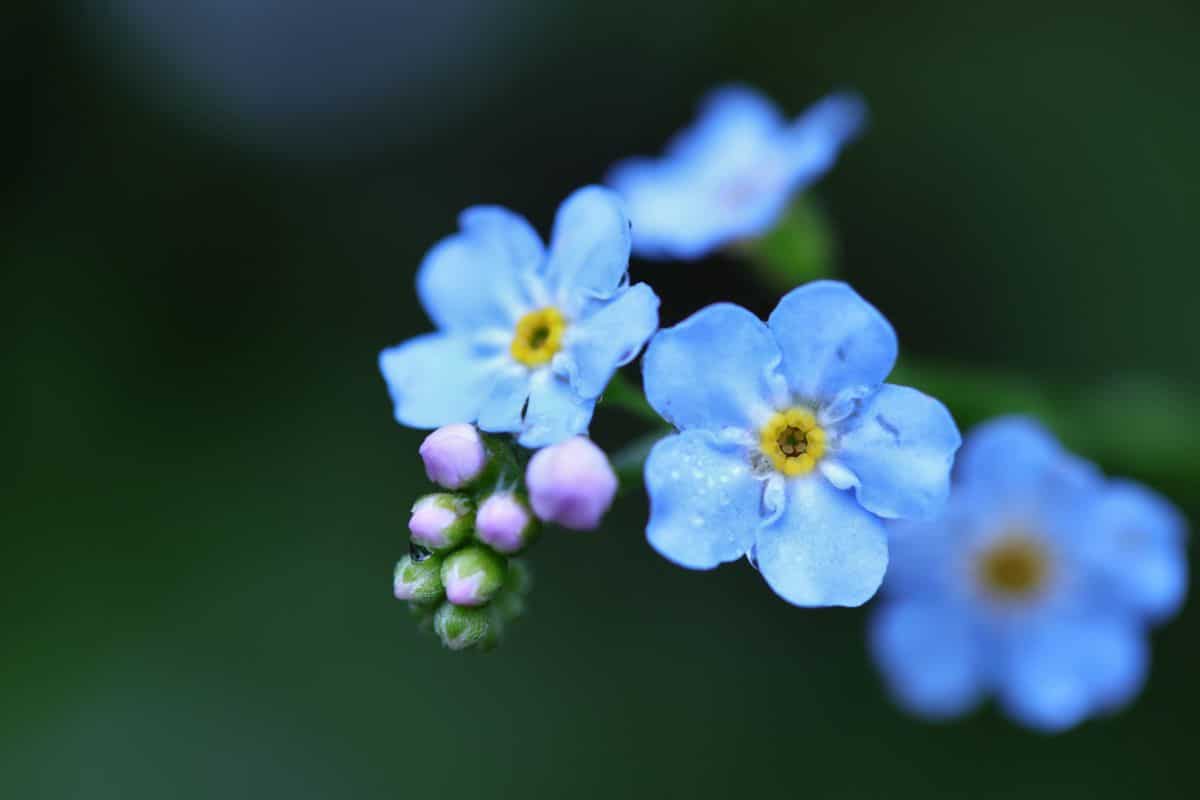
If you love gardening, there’s nothing like that first spring day when temperatures rise, birds begin to chirp and you see life returning to your garden beds. Both nature and you feel the enthusiasm that comes with longer days and warmer weather, so it’s no wonder if you can’t wait to start gardening!
When that time arrives, bust out your gardening gloves and your hand shovel and get planting. While the flowers we’ve covered today are perfect plants to try in this year’s spring garden, there are lots of other wonderful early blooming plants available. So do a bit of research, browse the internet and find some inspiration.
Whether you’re looking for plants that can tolerate frost or flowers that need a long growing season to bloom, spring is one of the best times to add to your garden. And even if you get an unexpectedly late frost, pick up a frost blanket or two. Winter weather be gone -- spring is here and it’s time to garden!

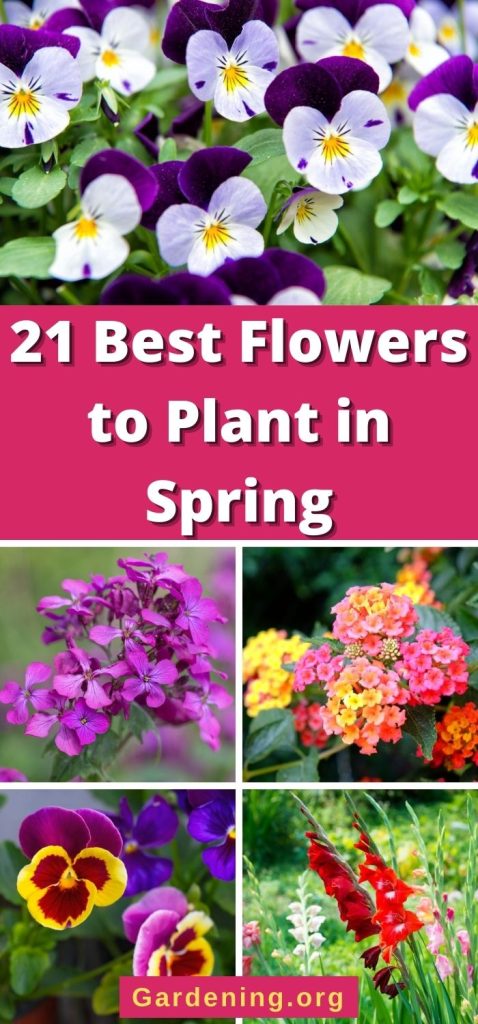
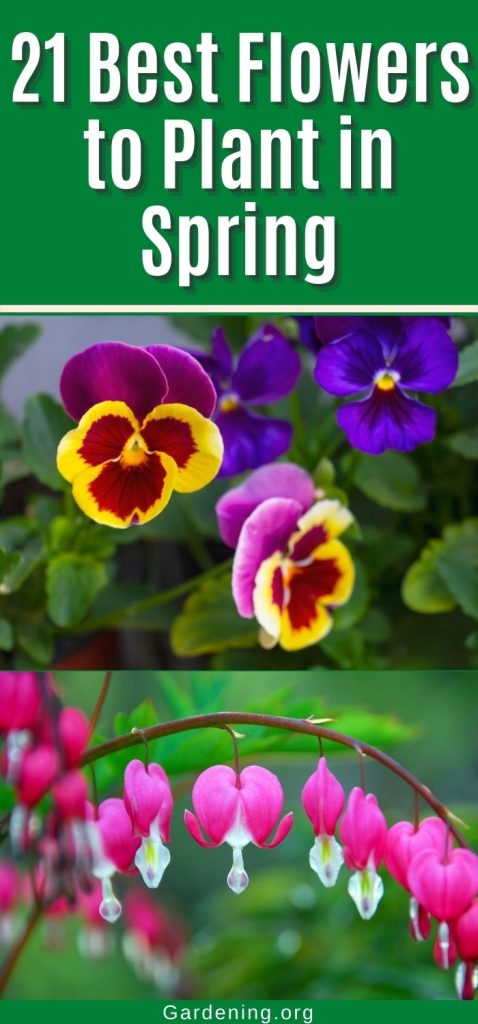

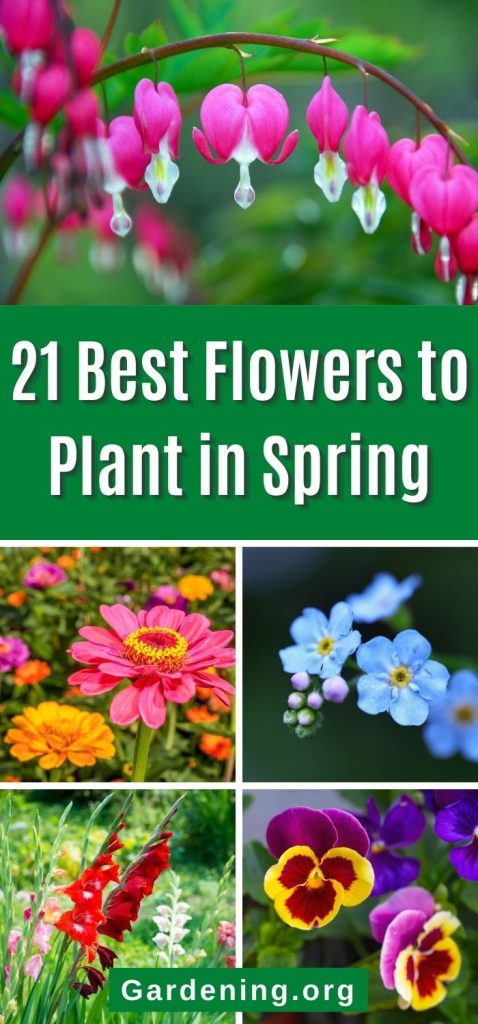
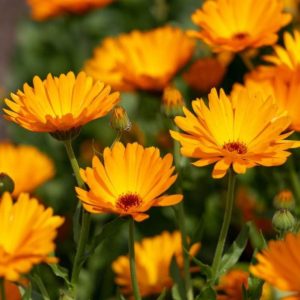

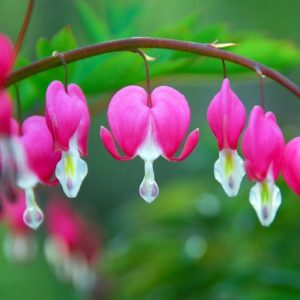

Leave a Reply